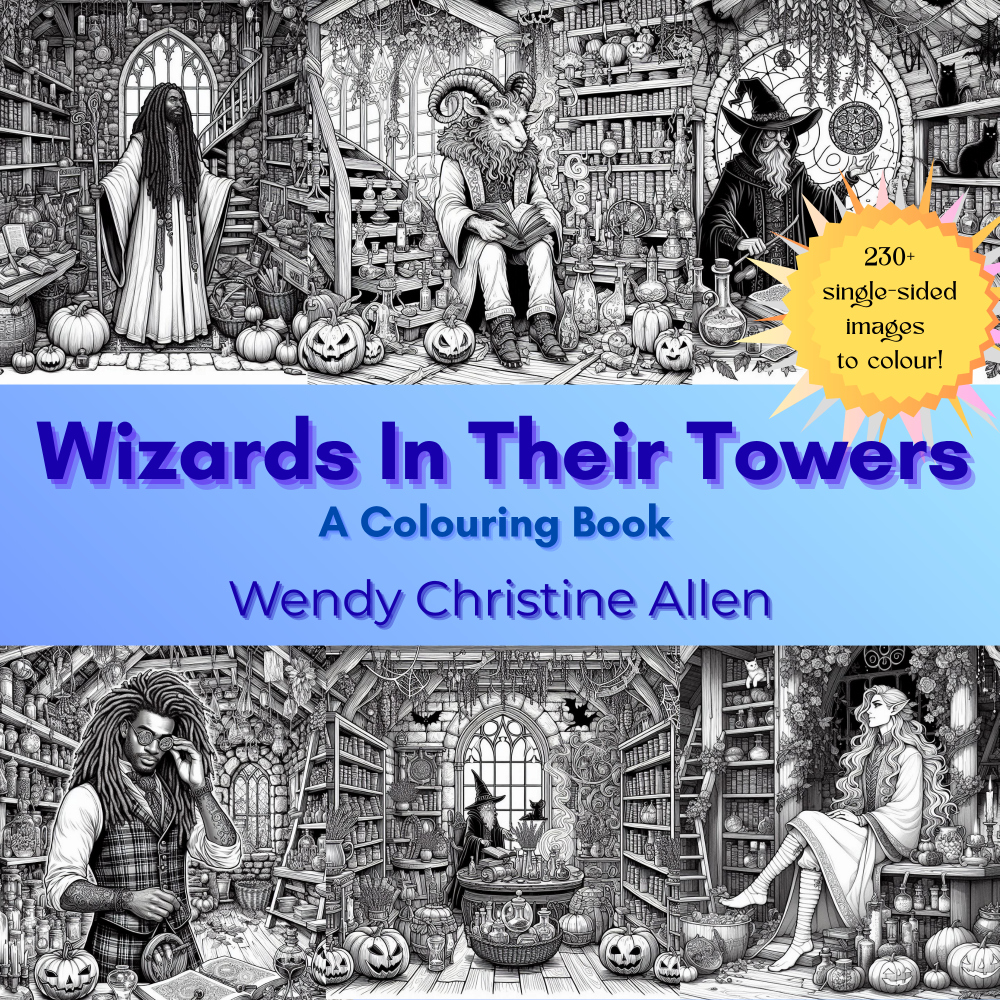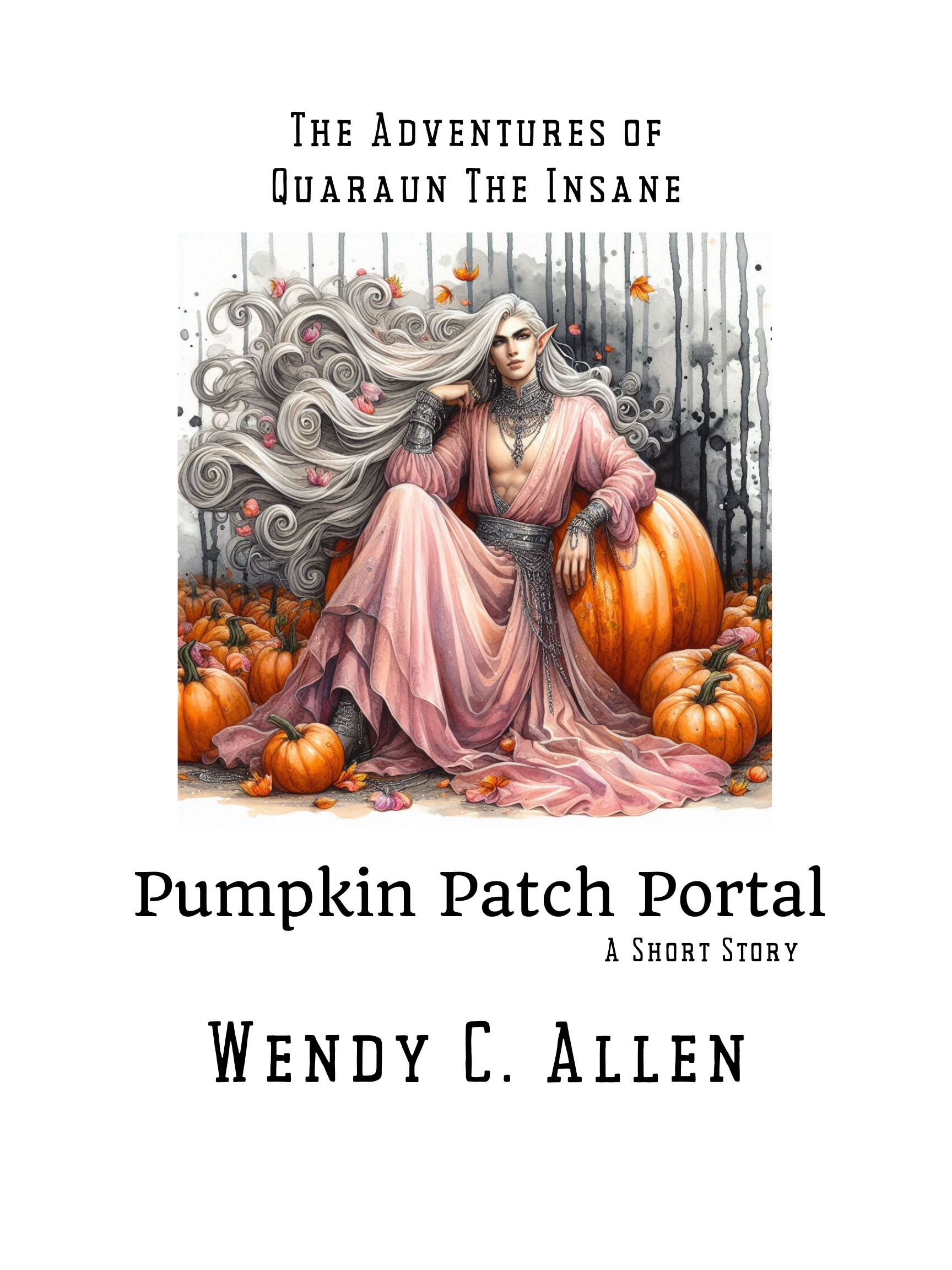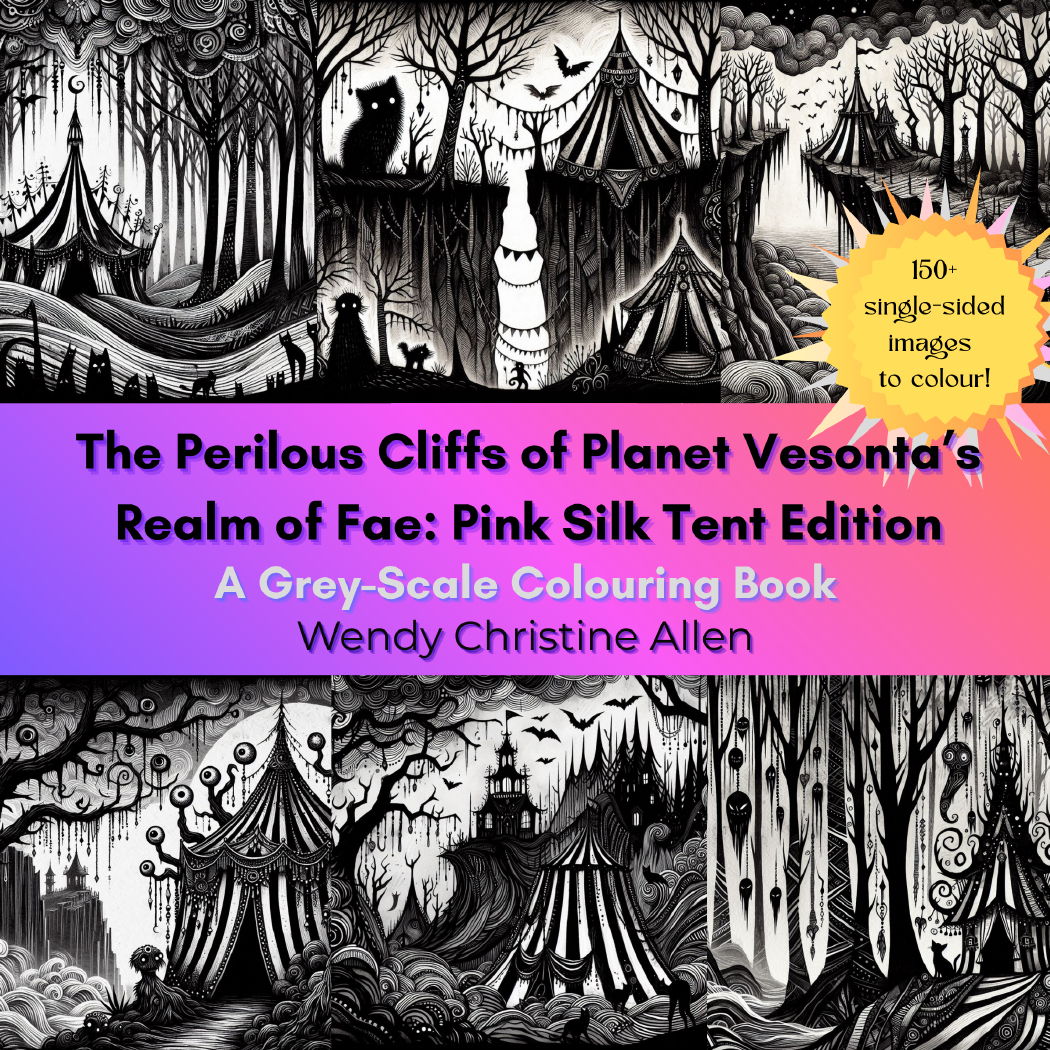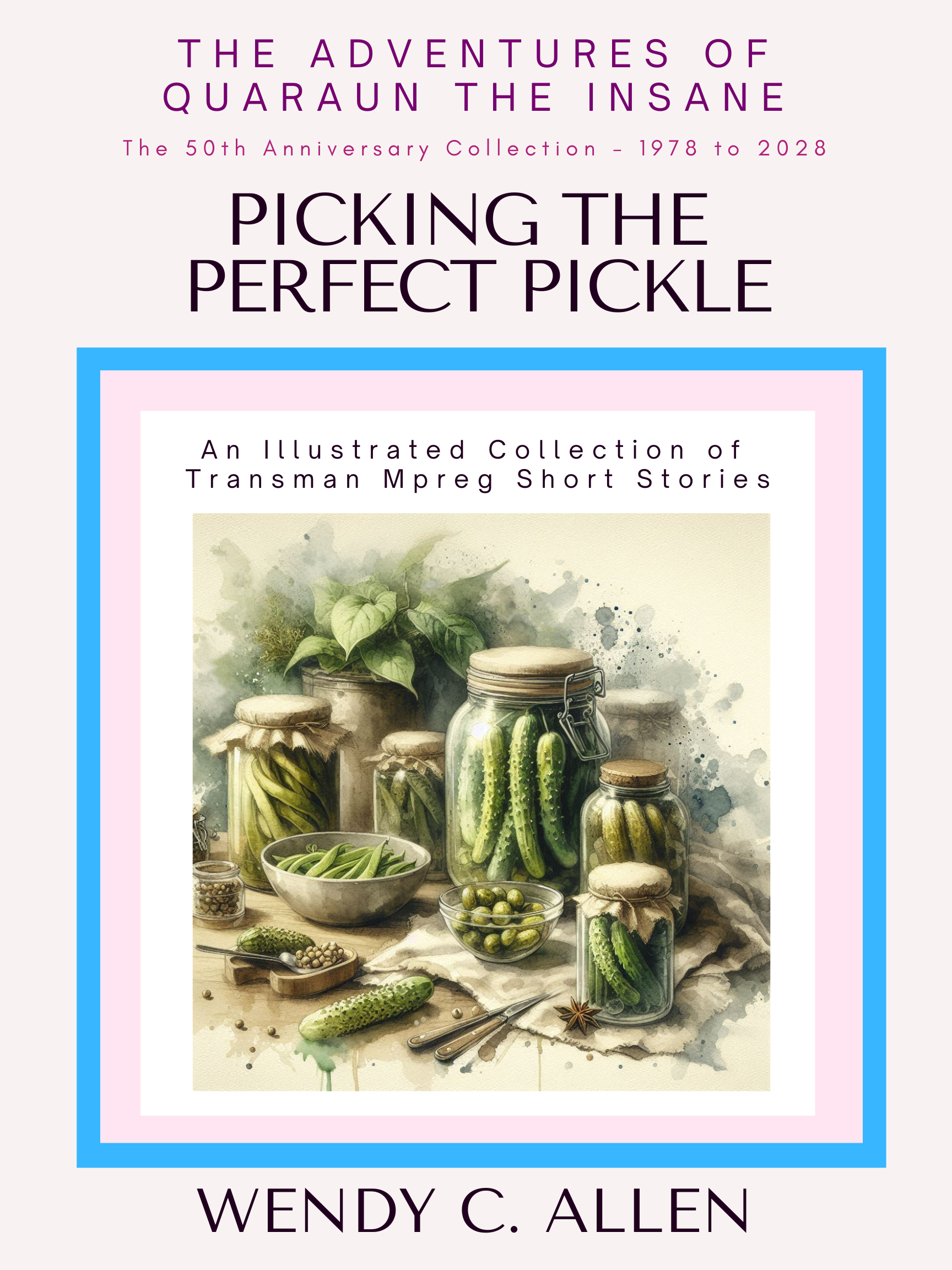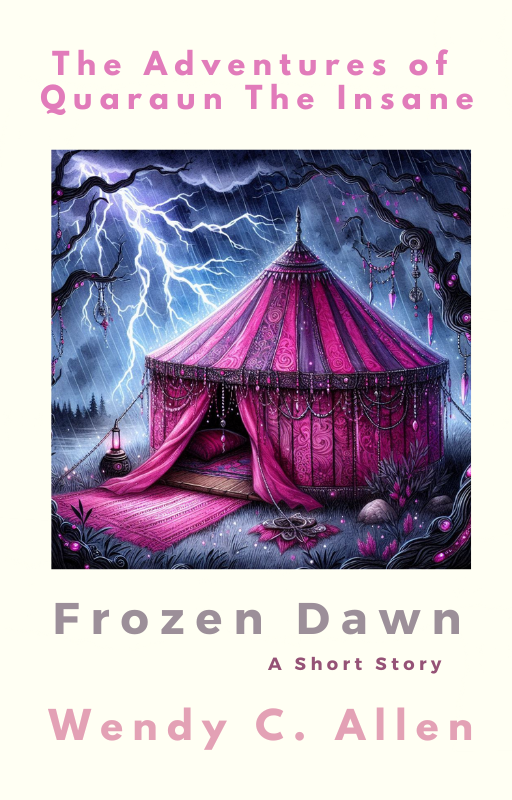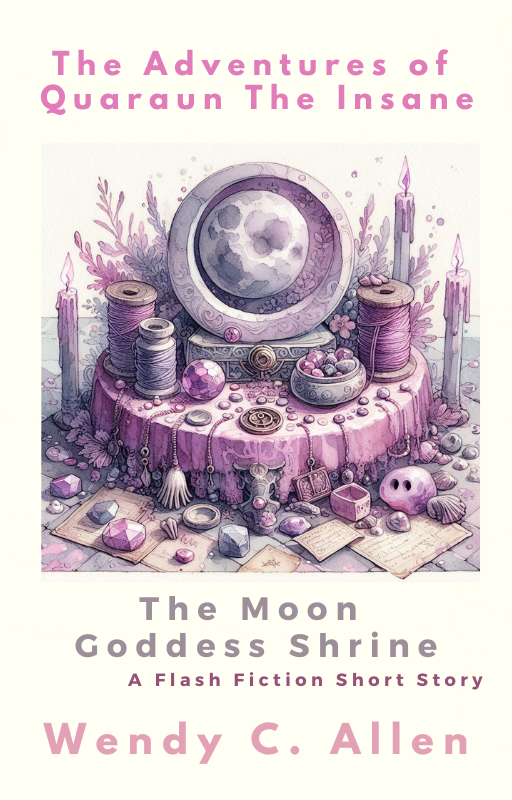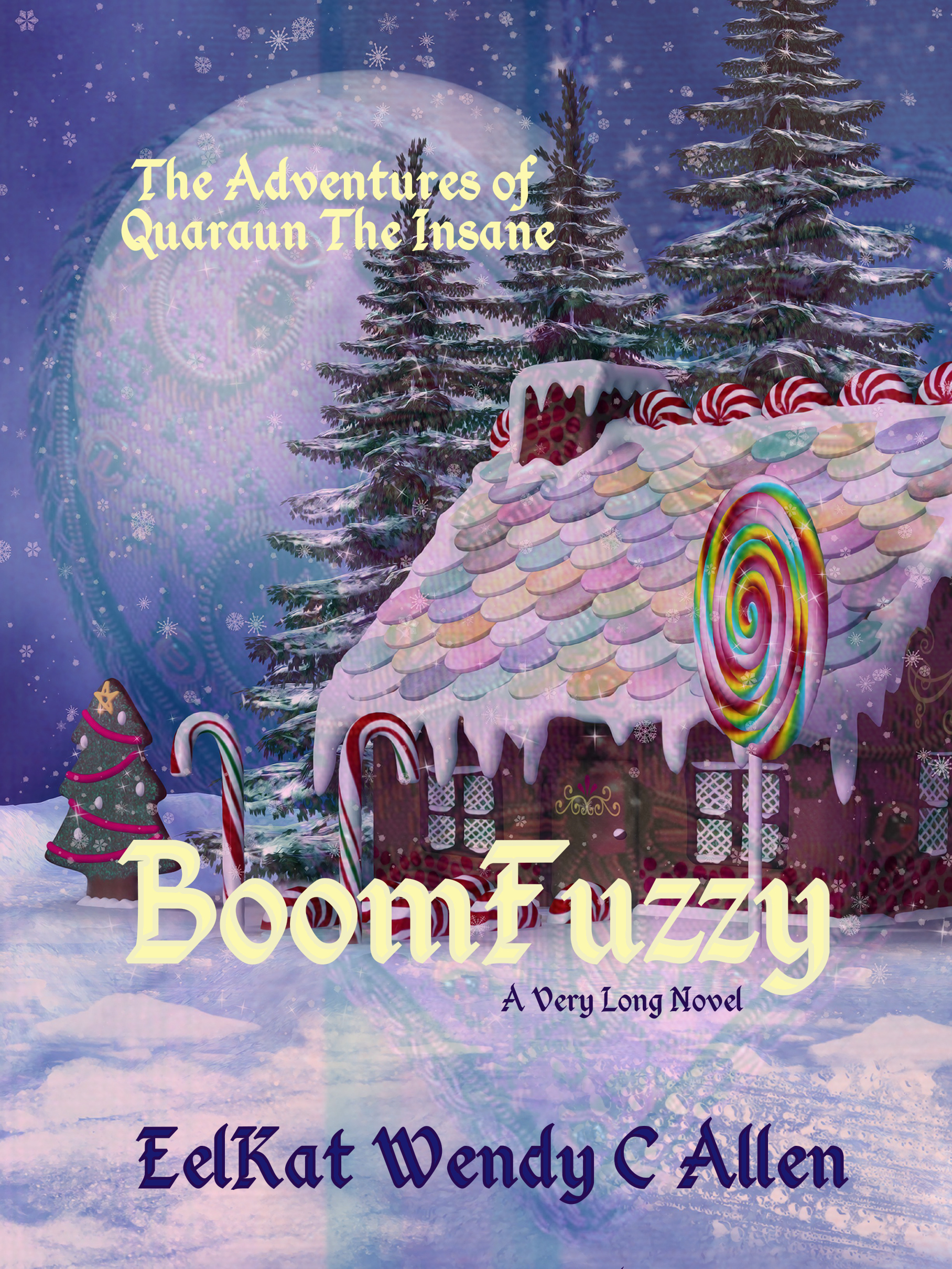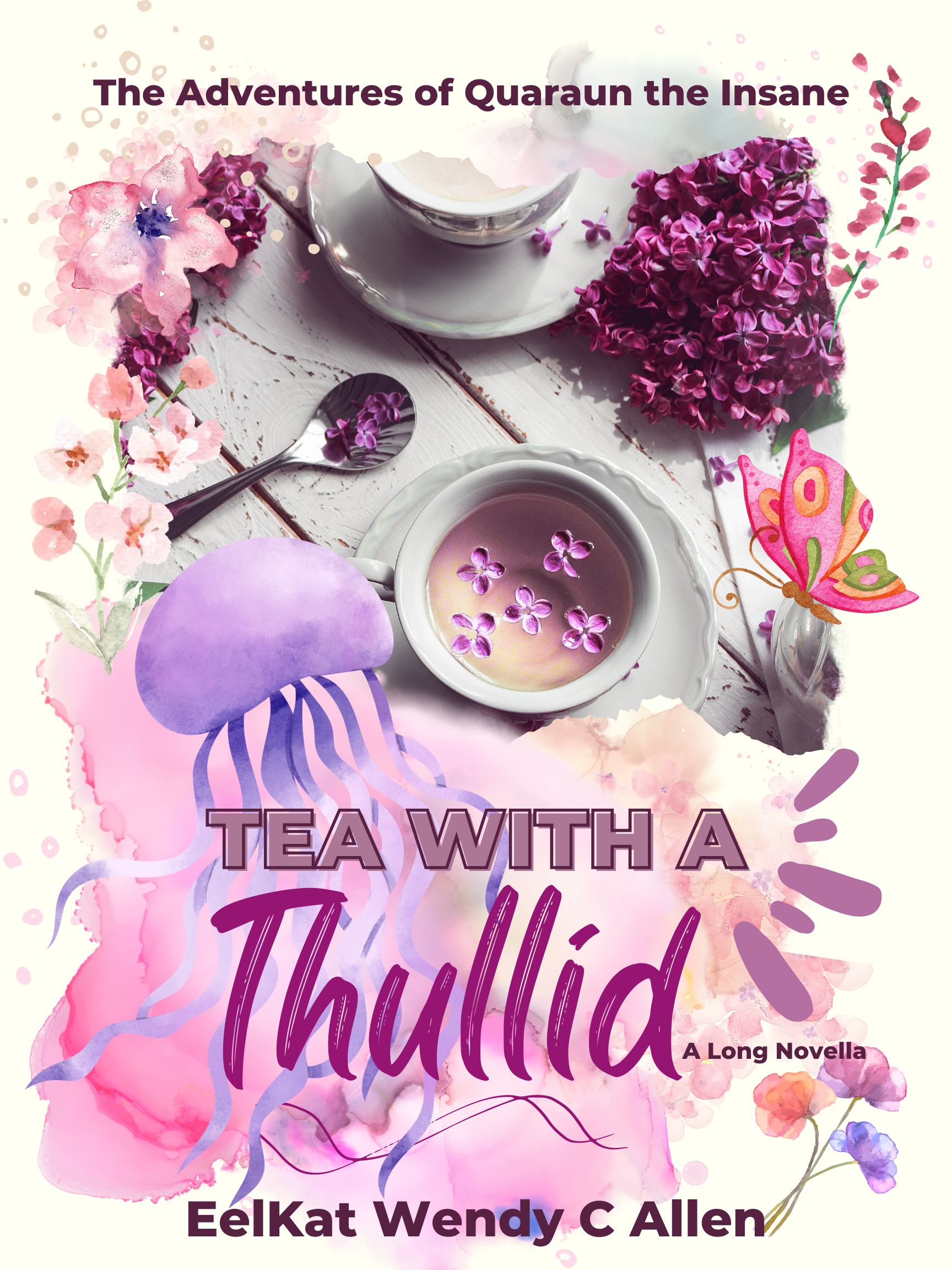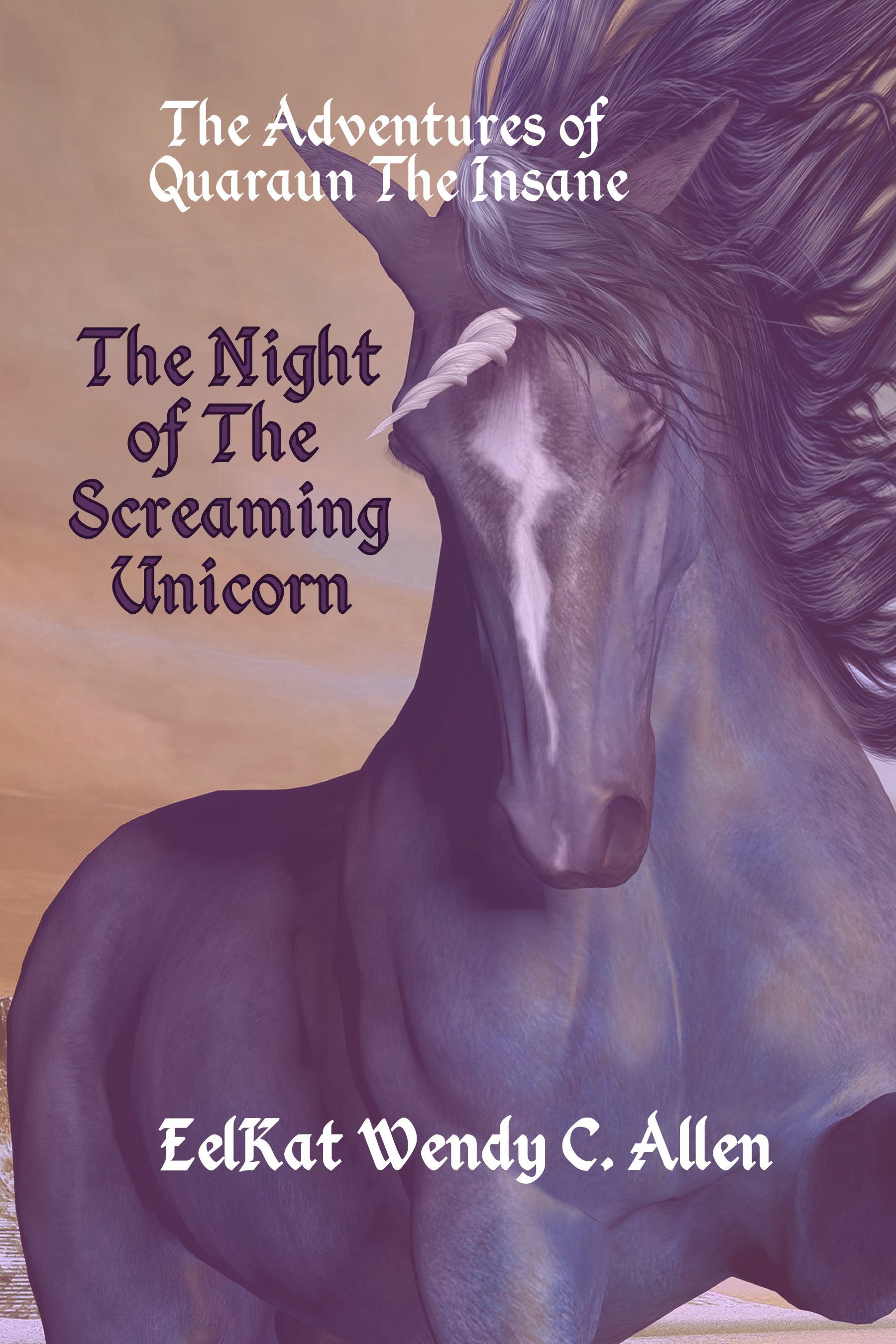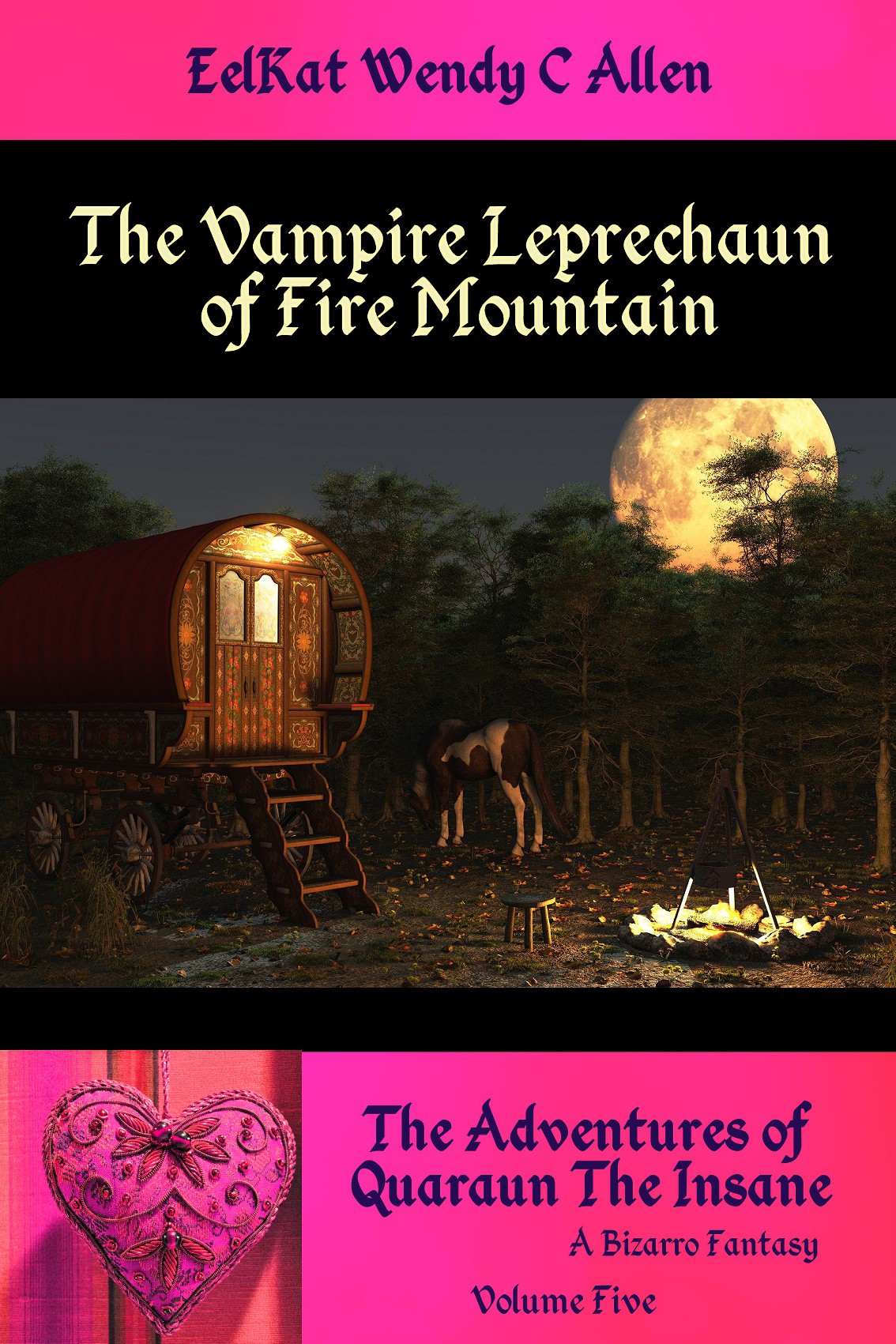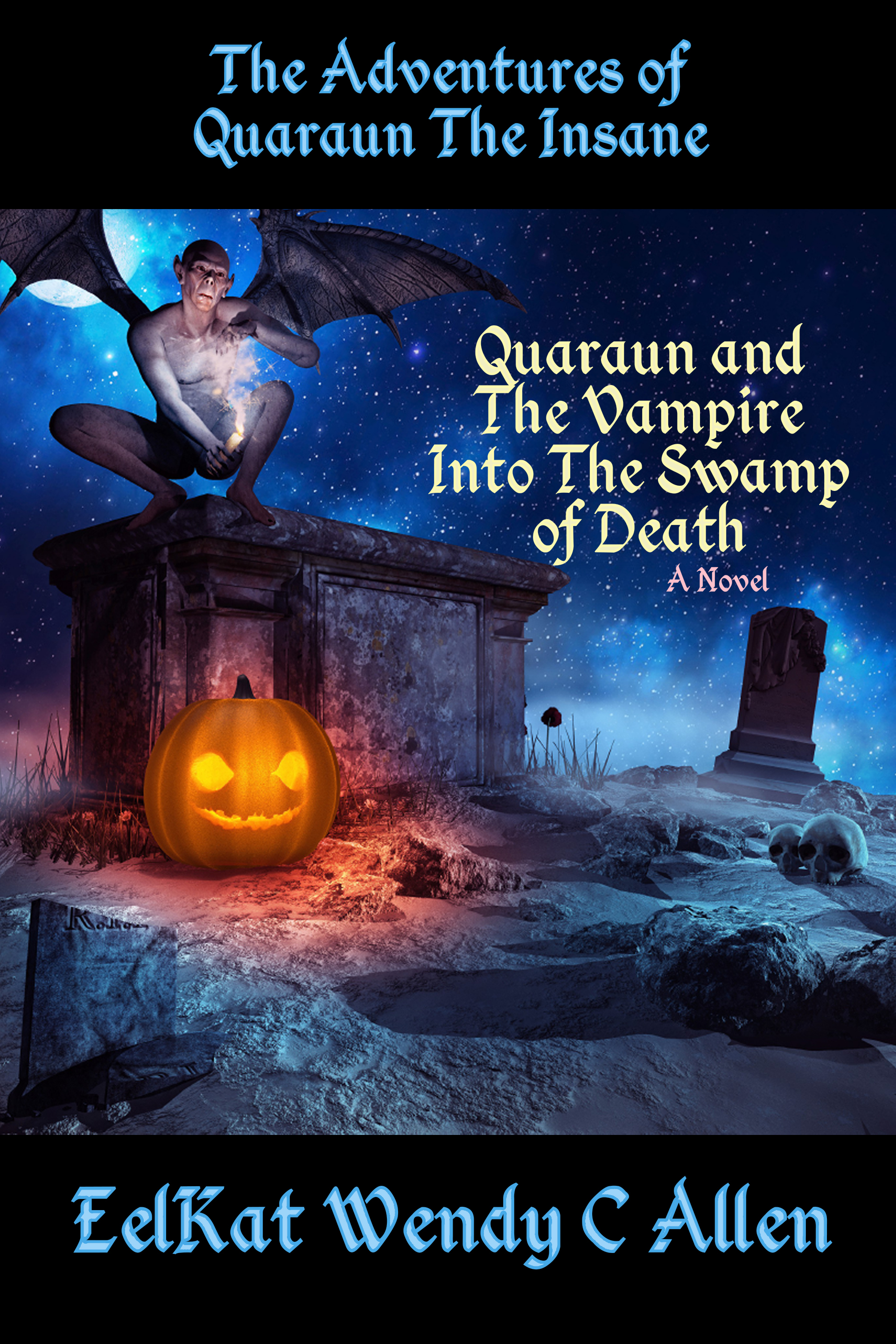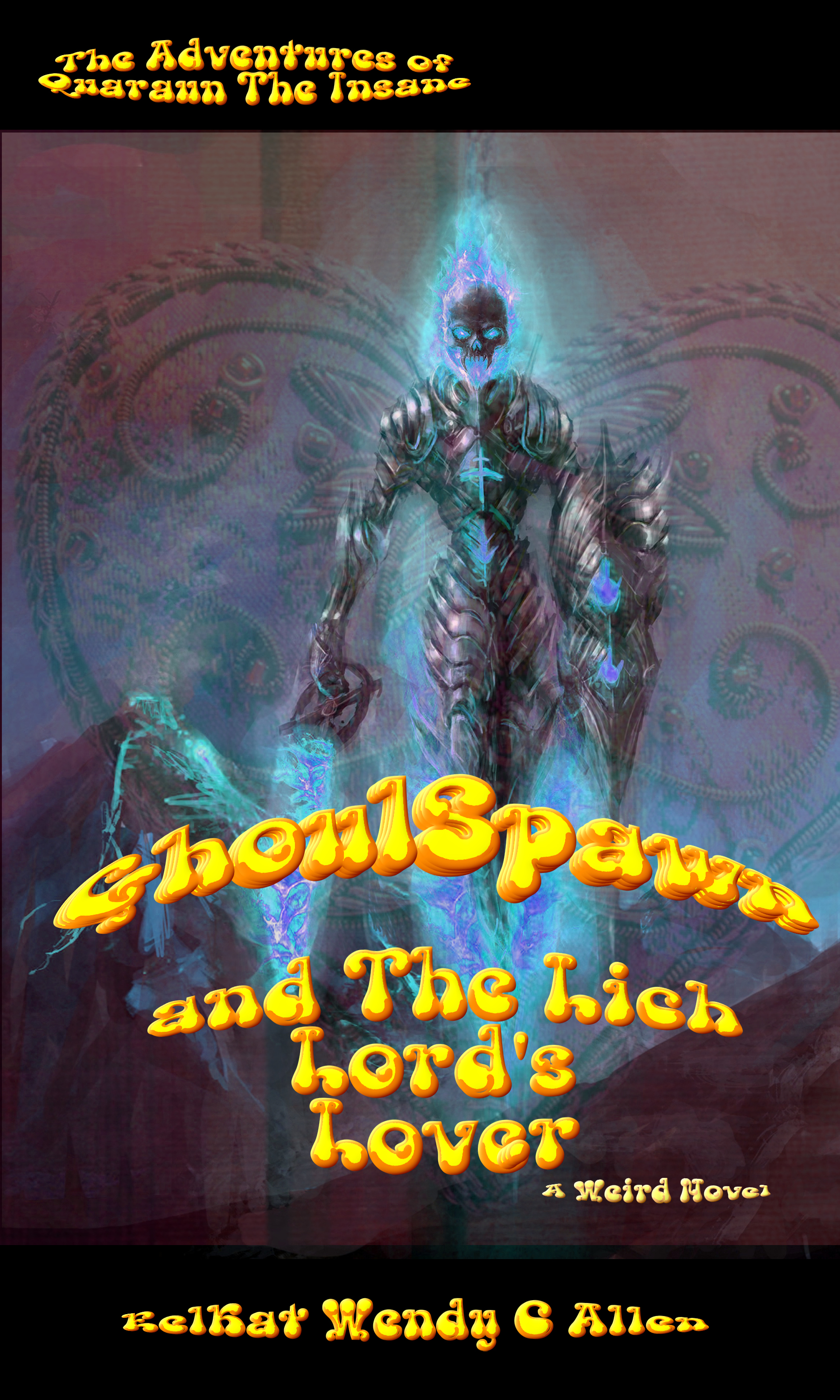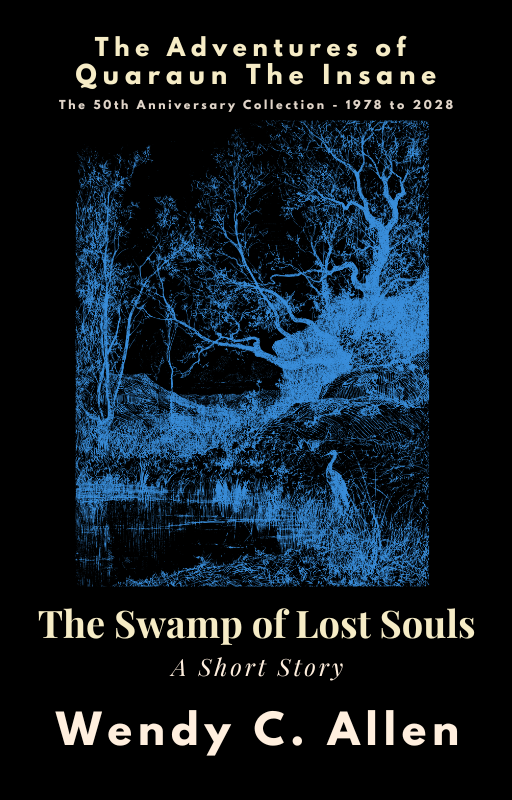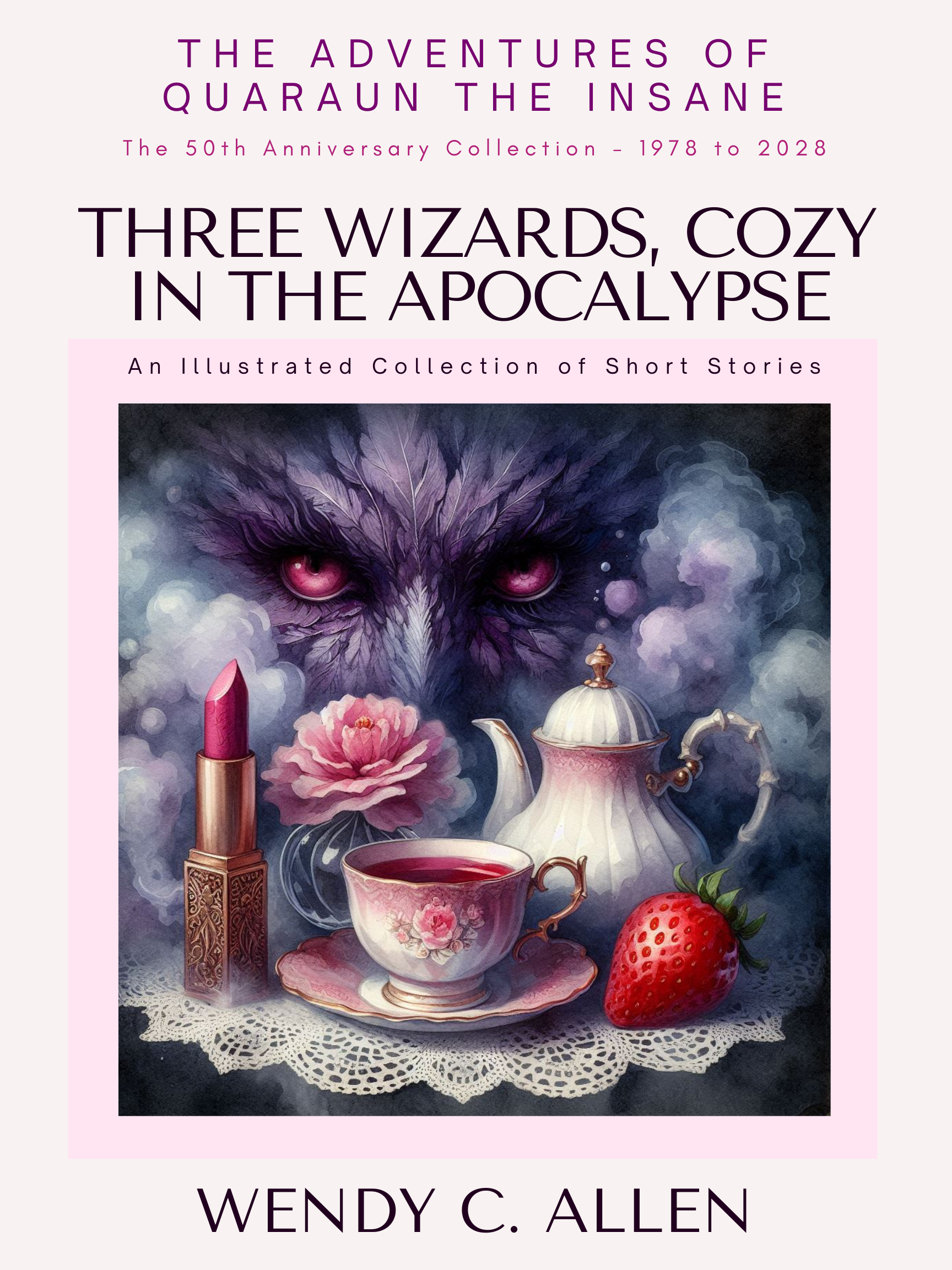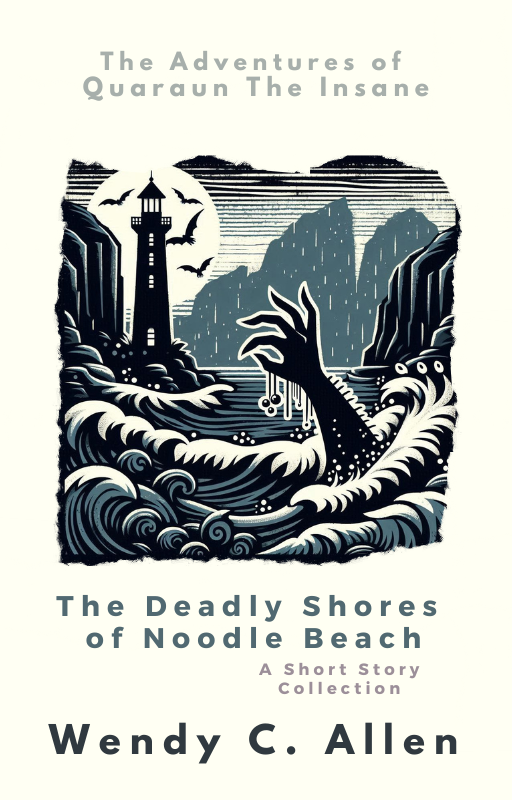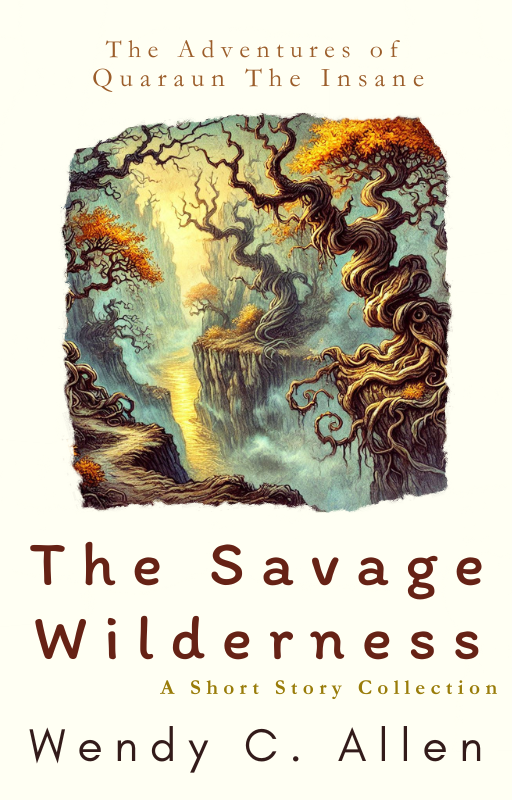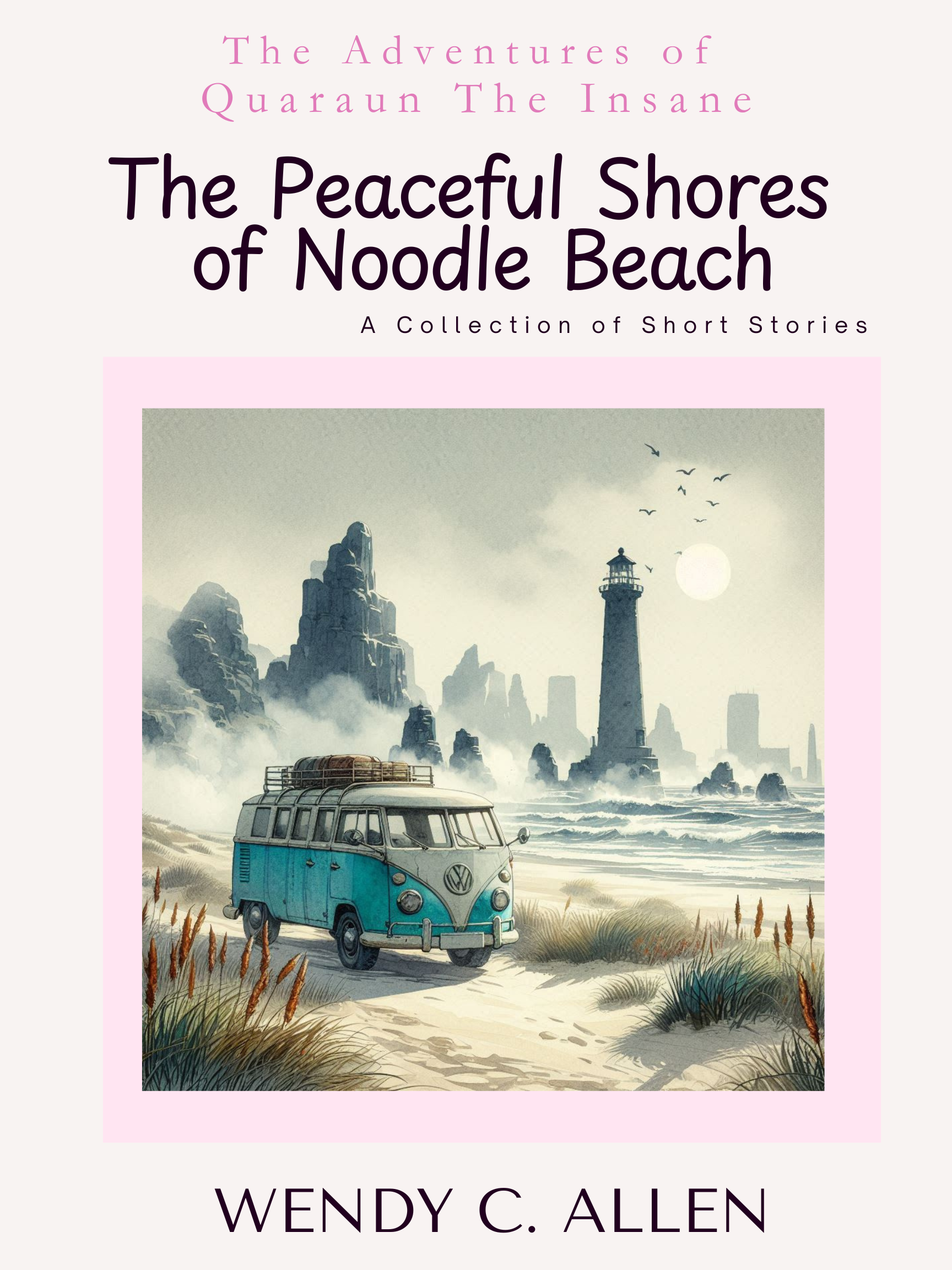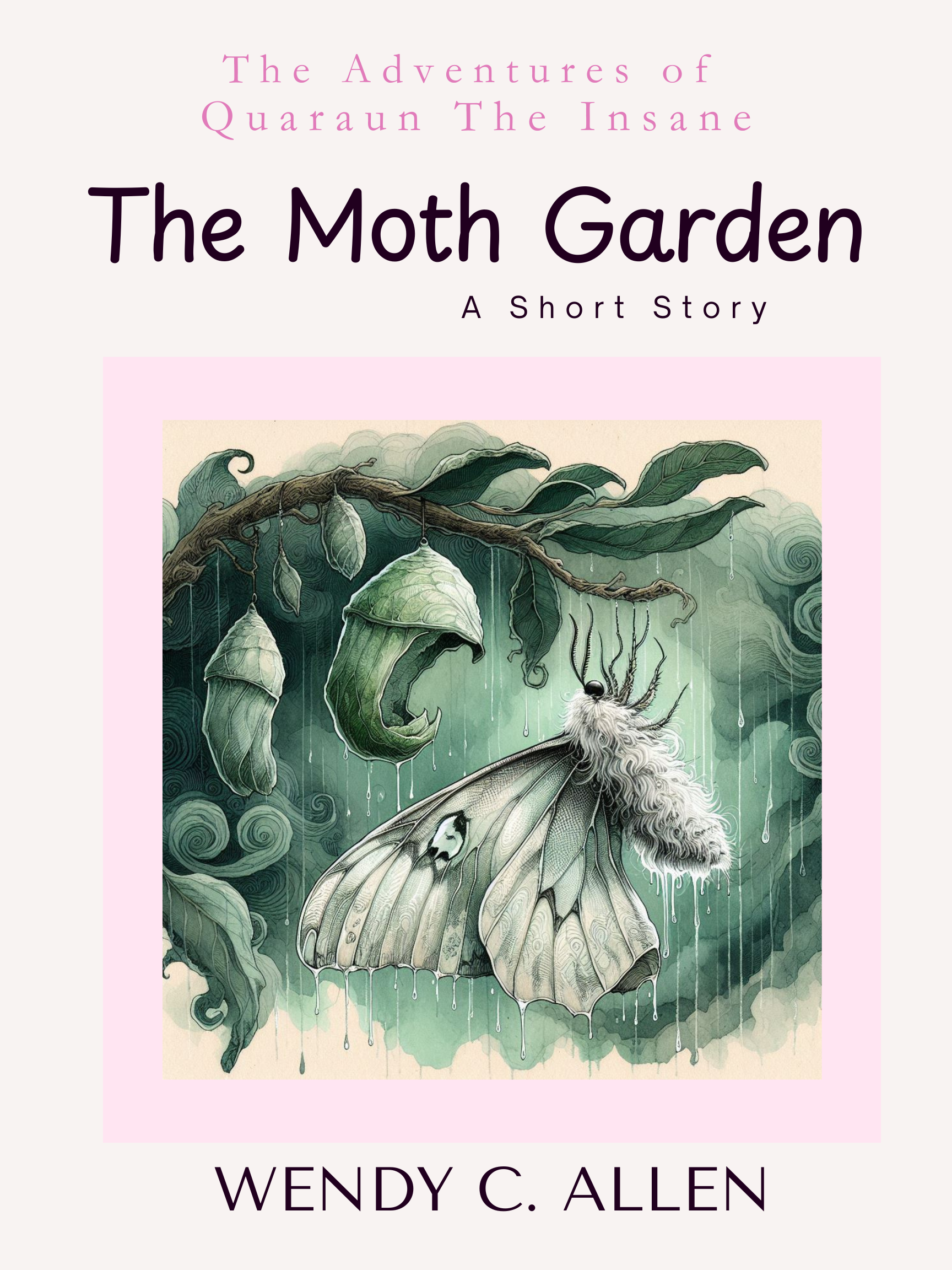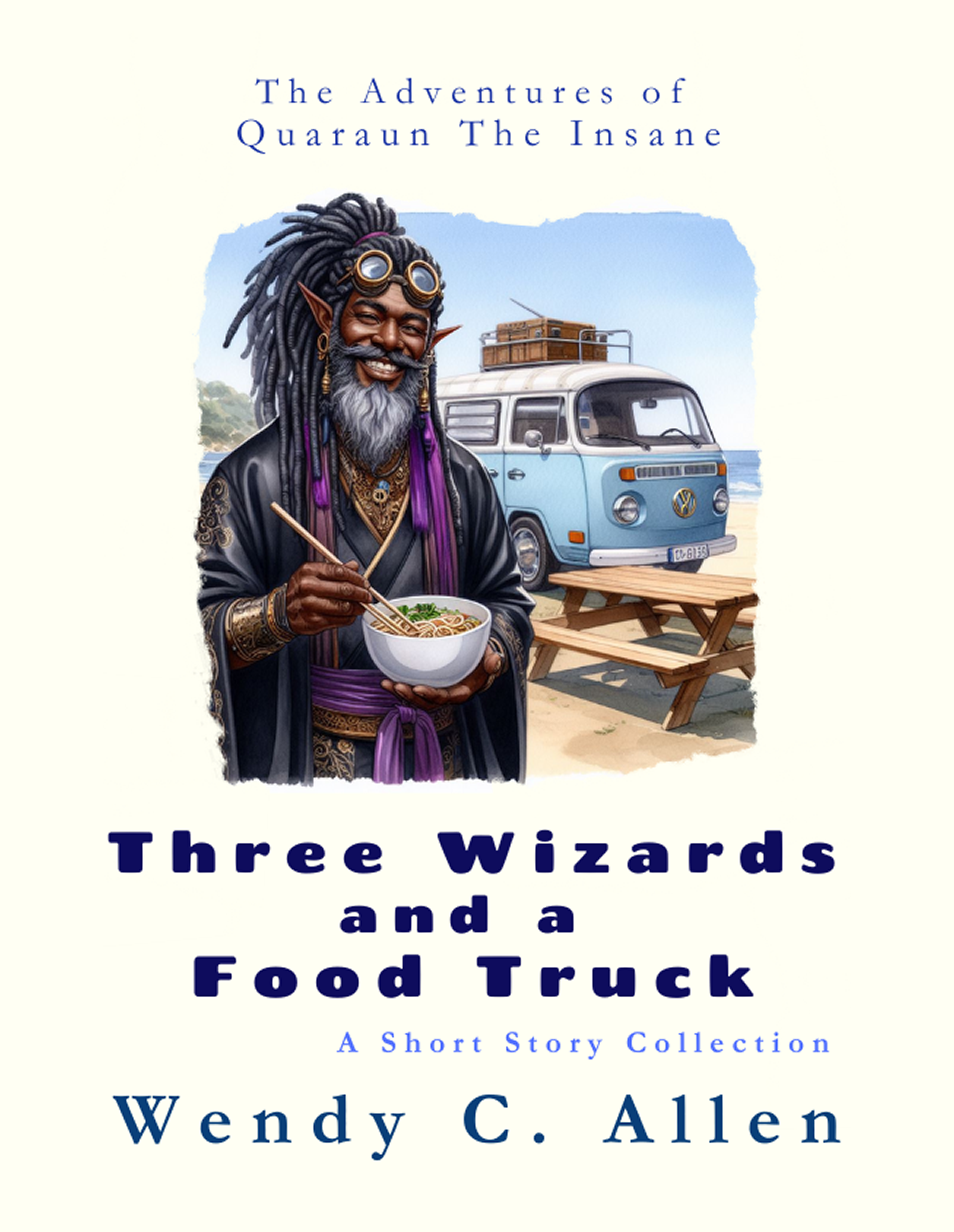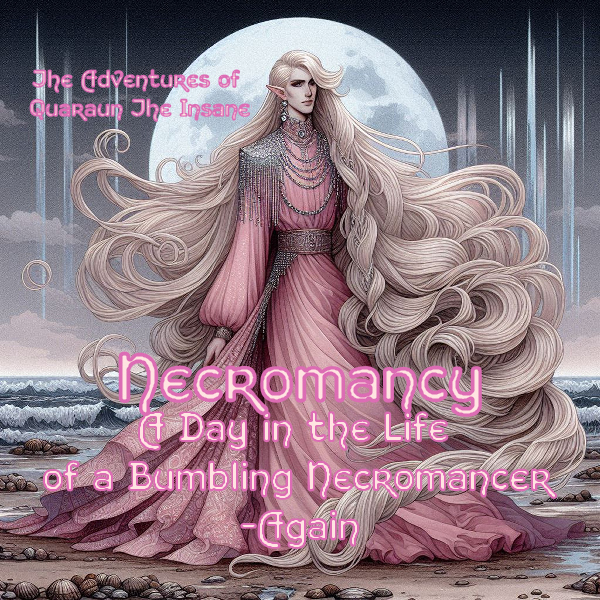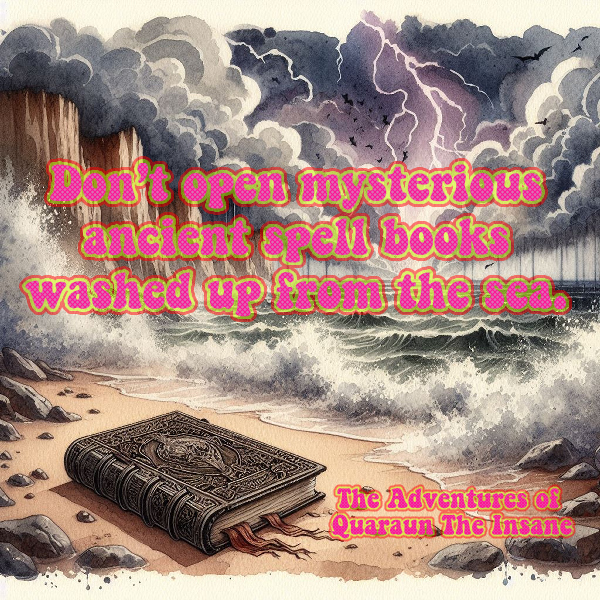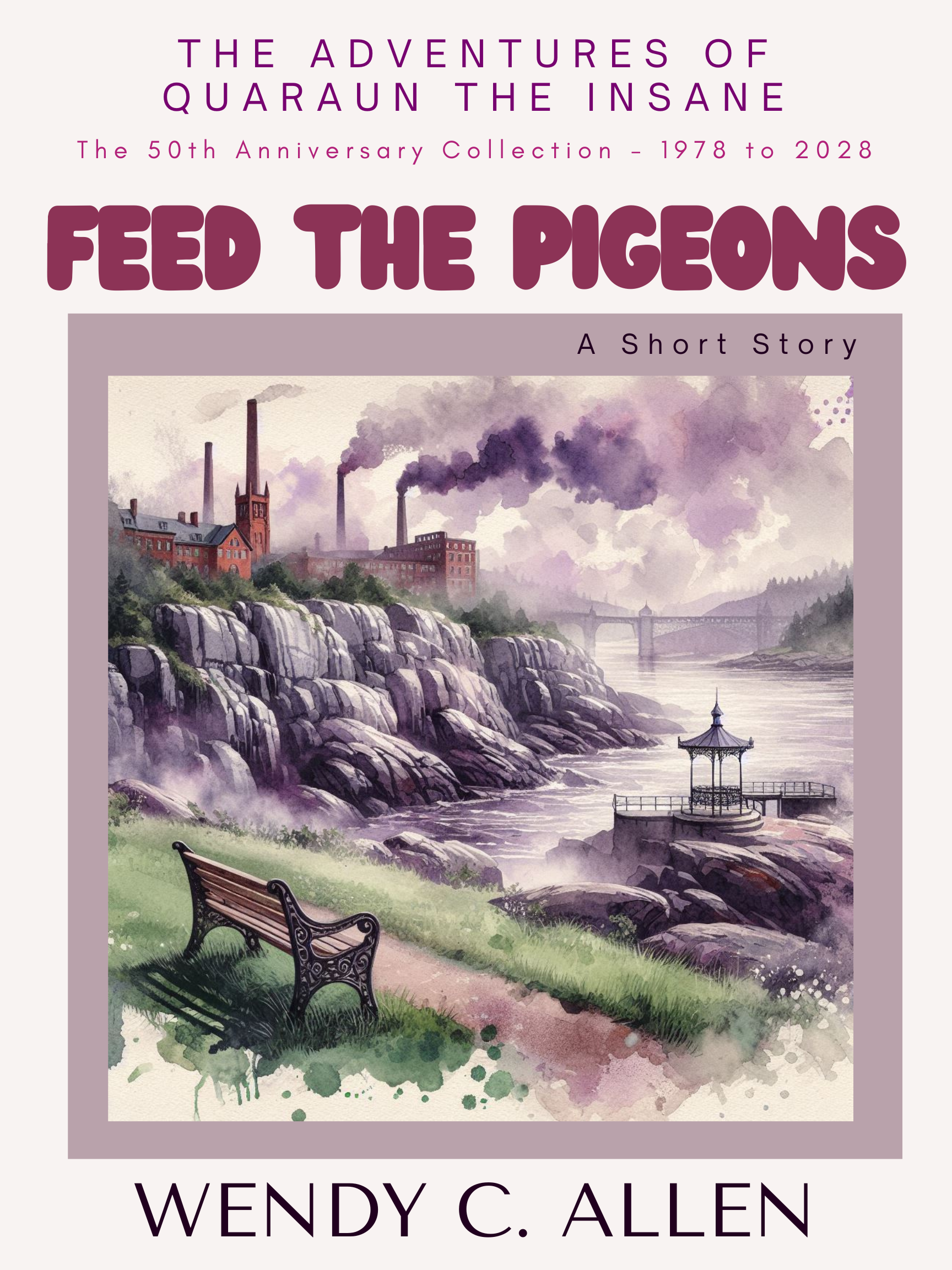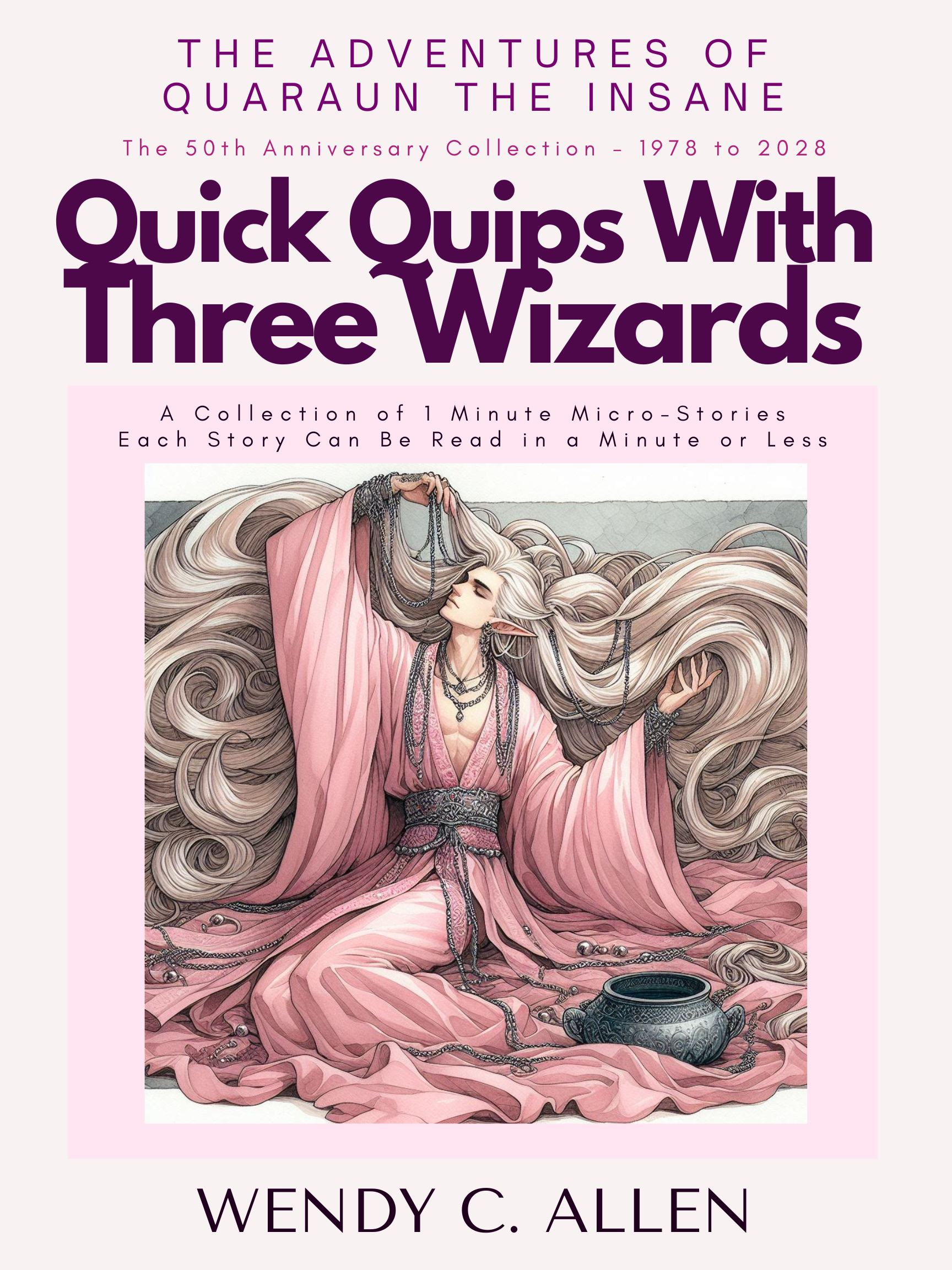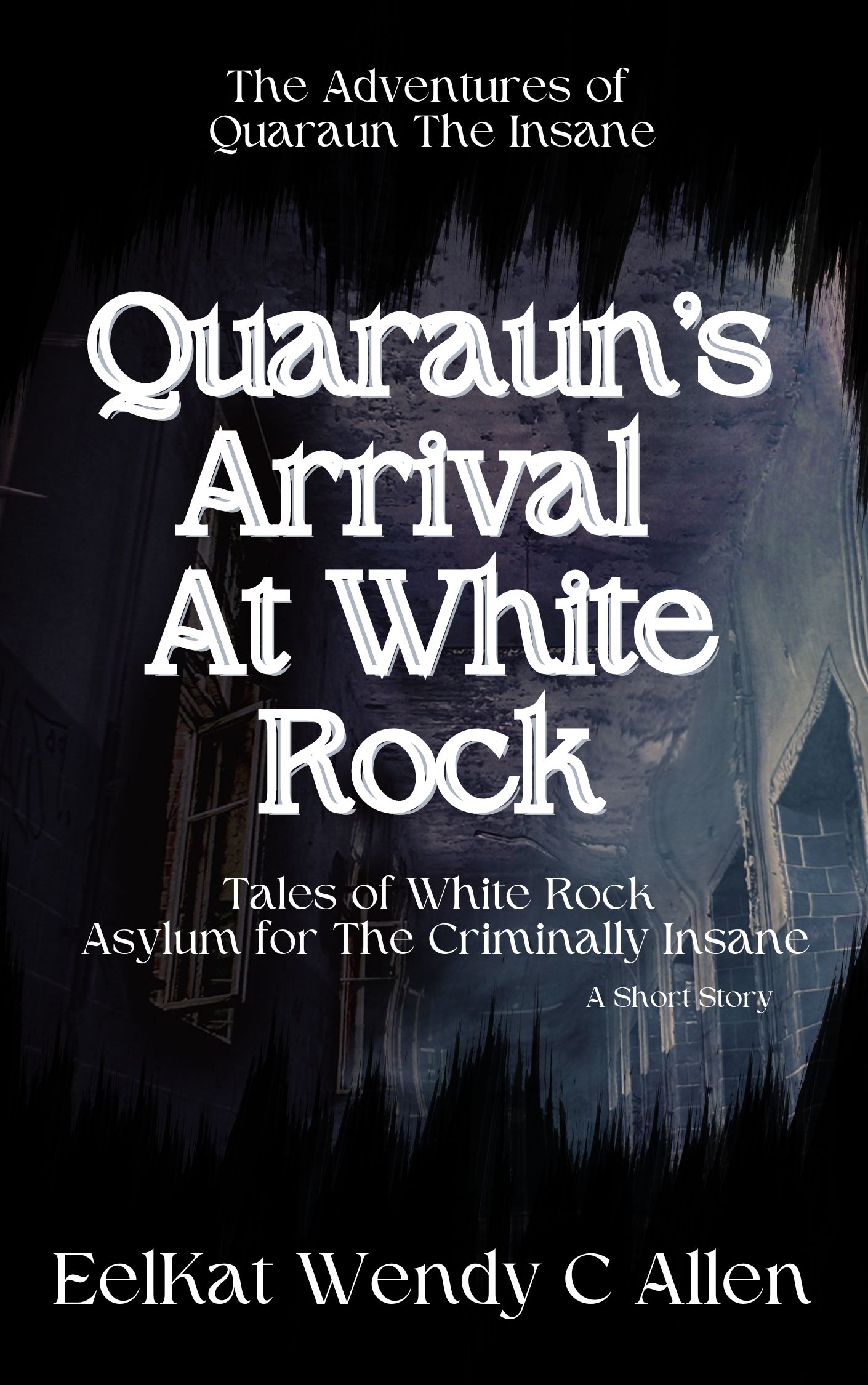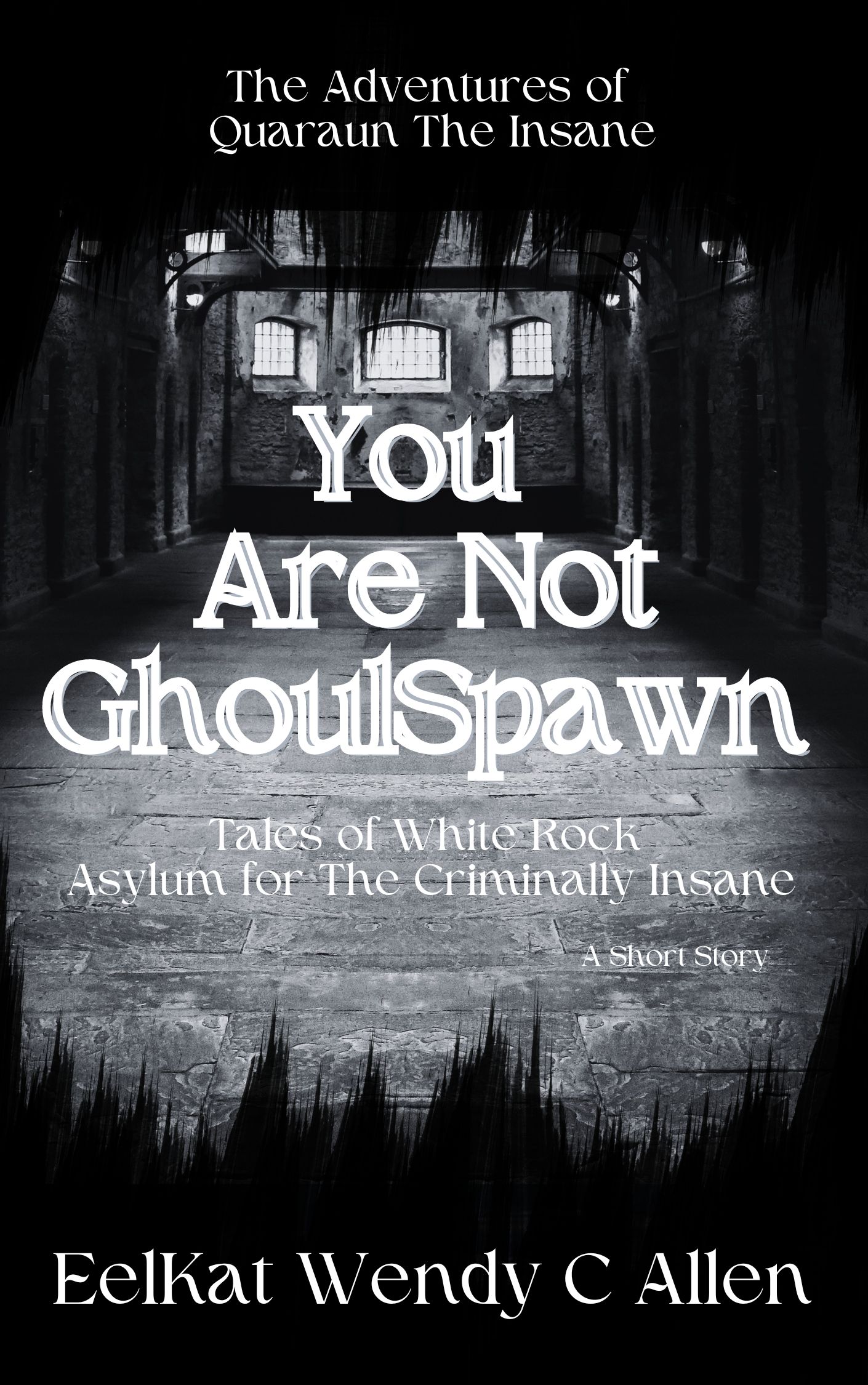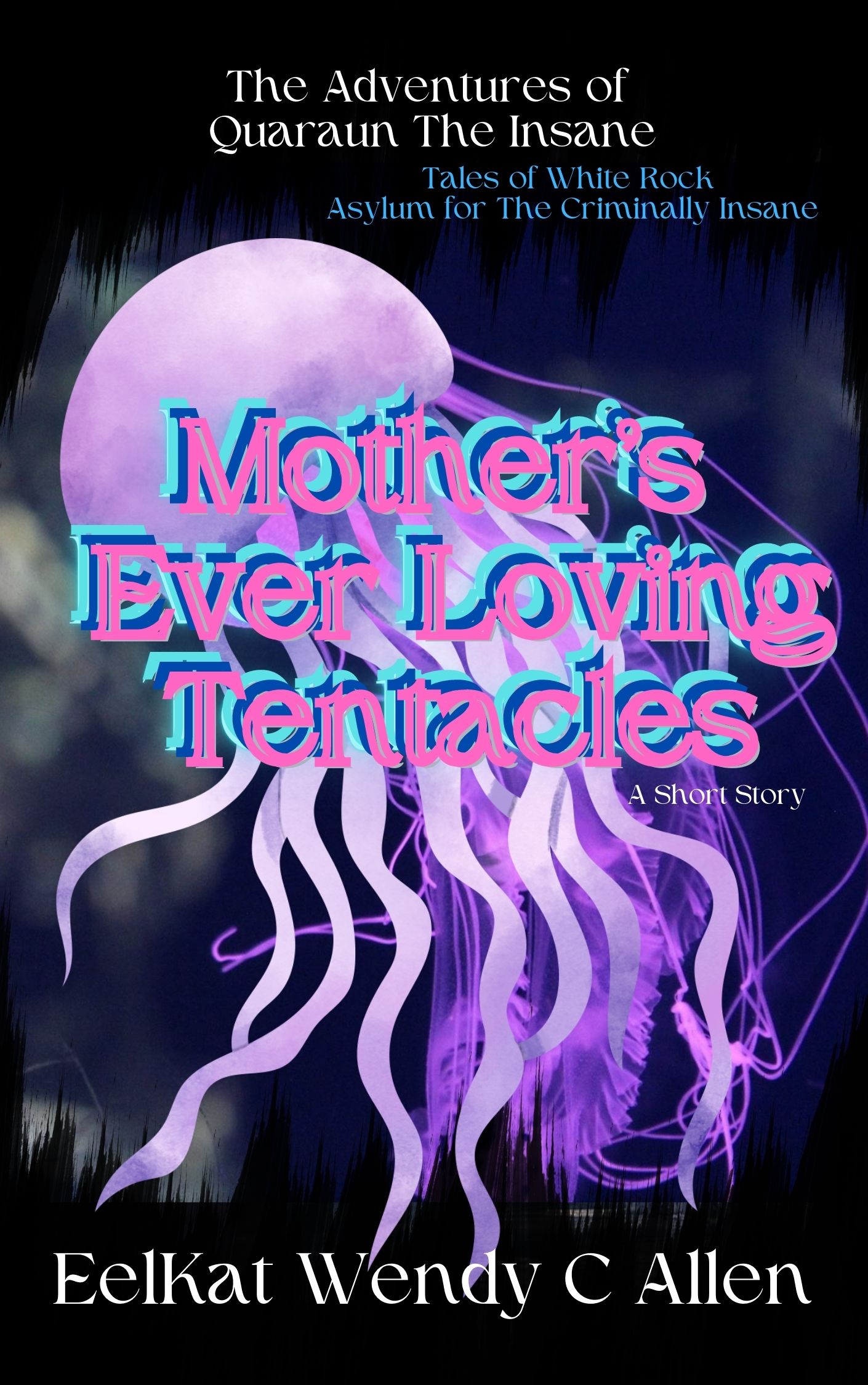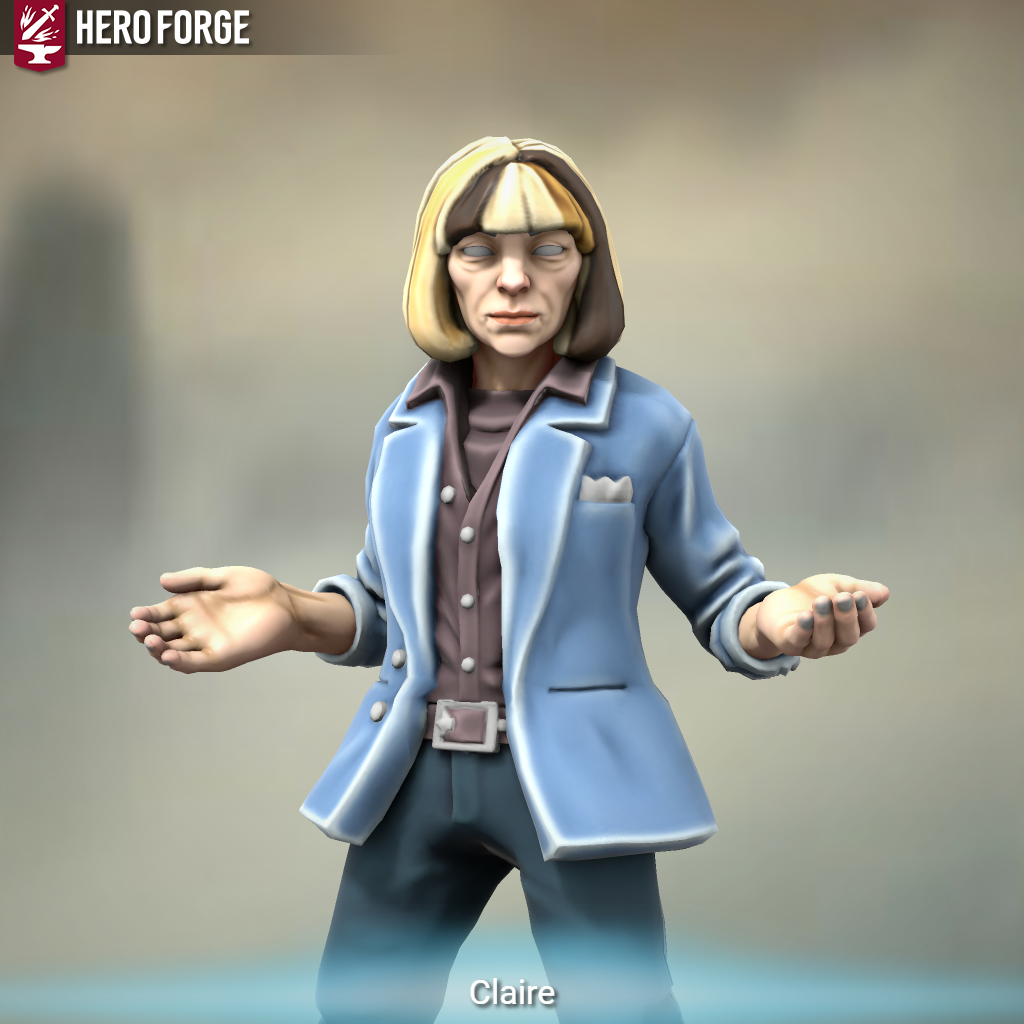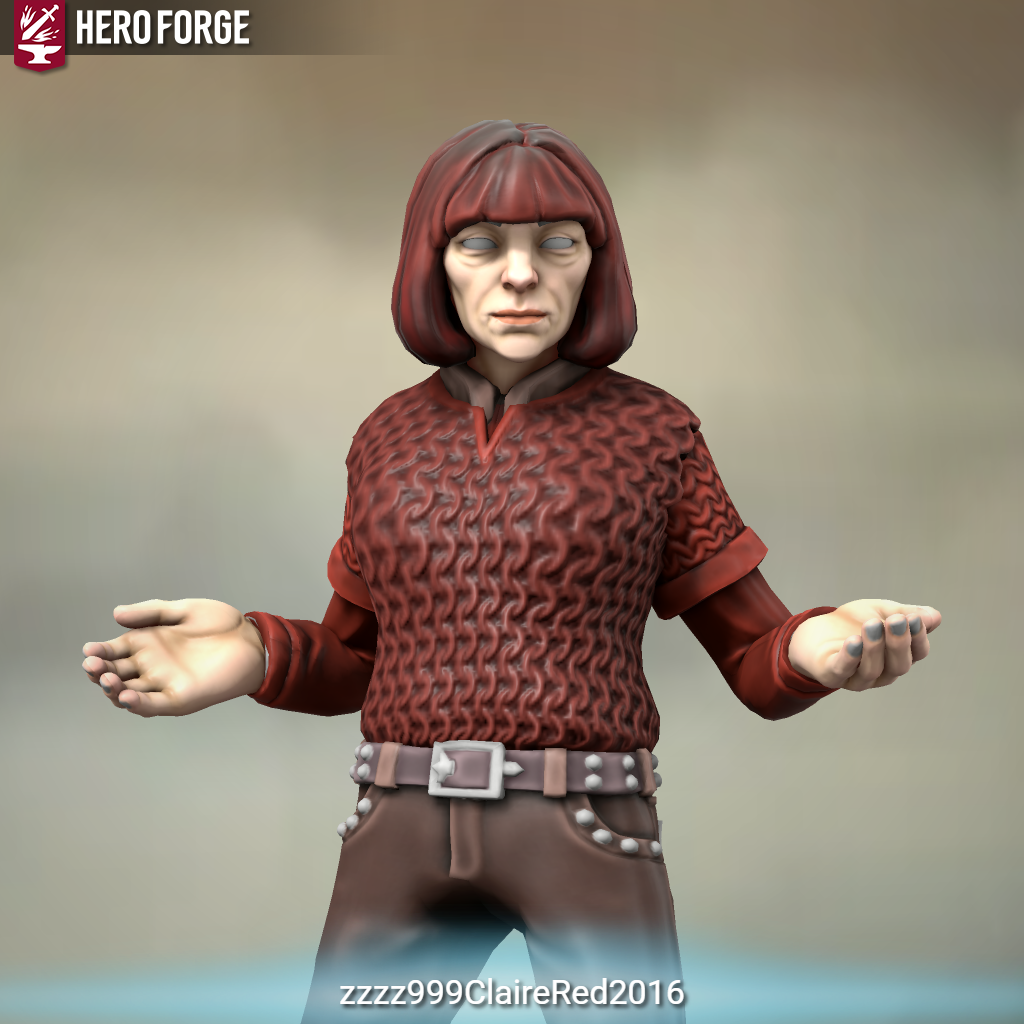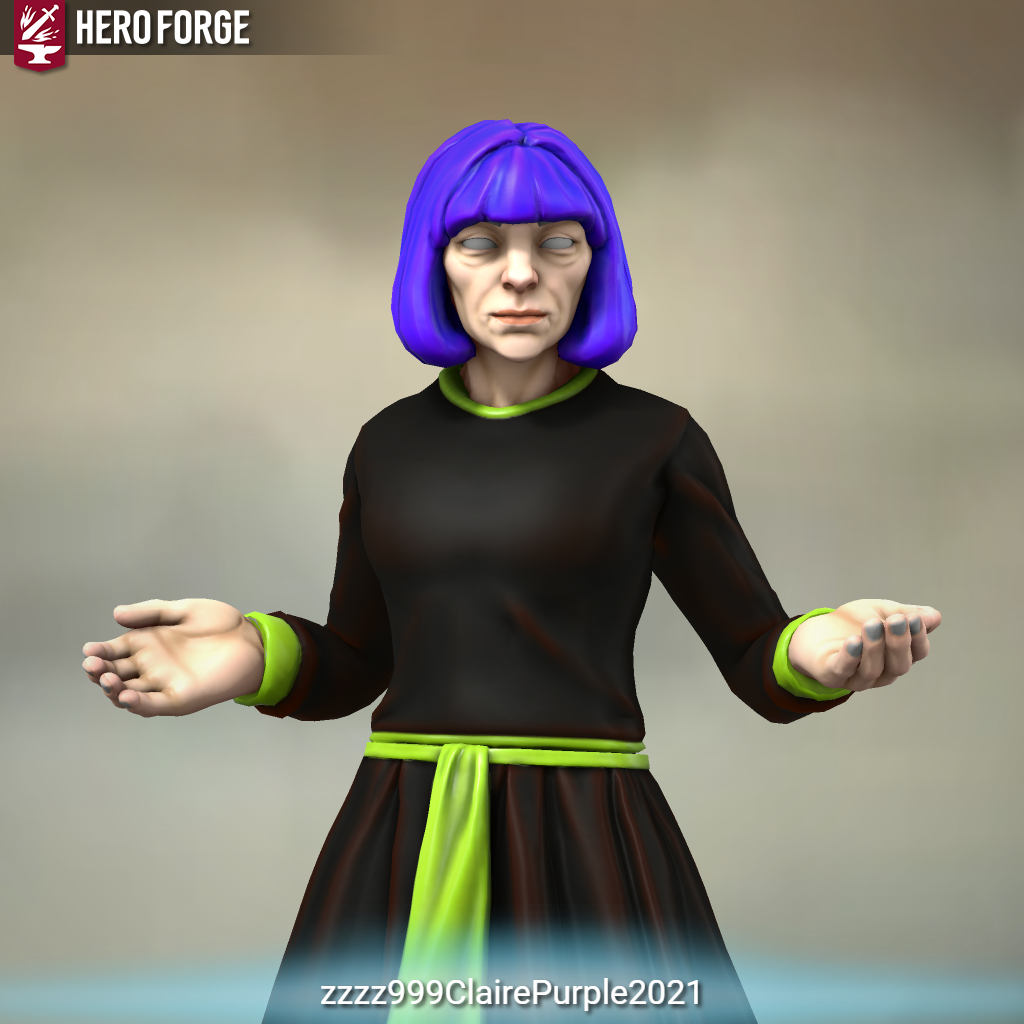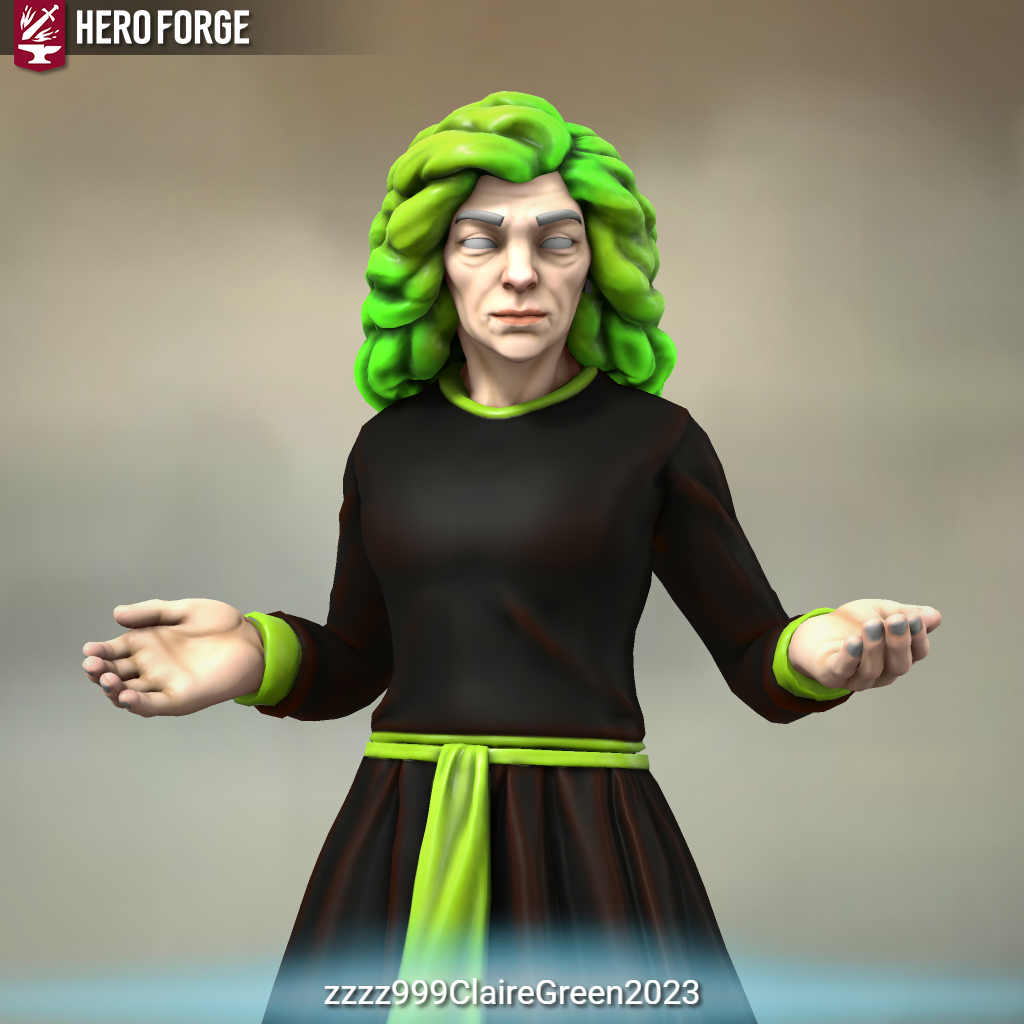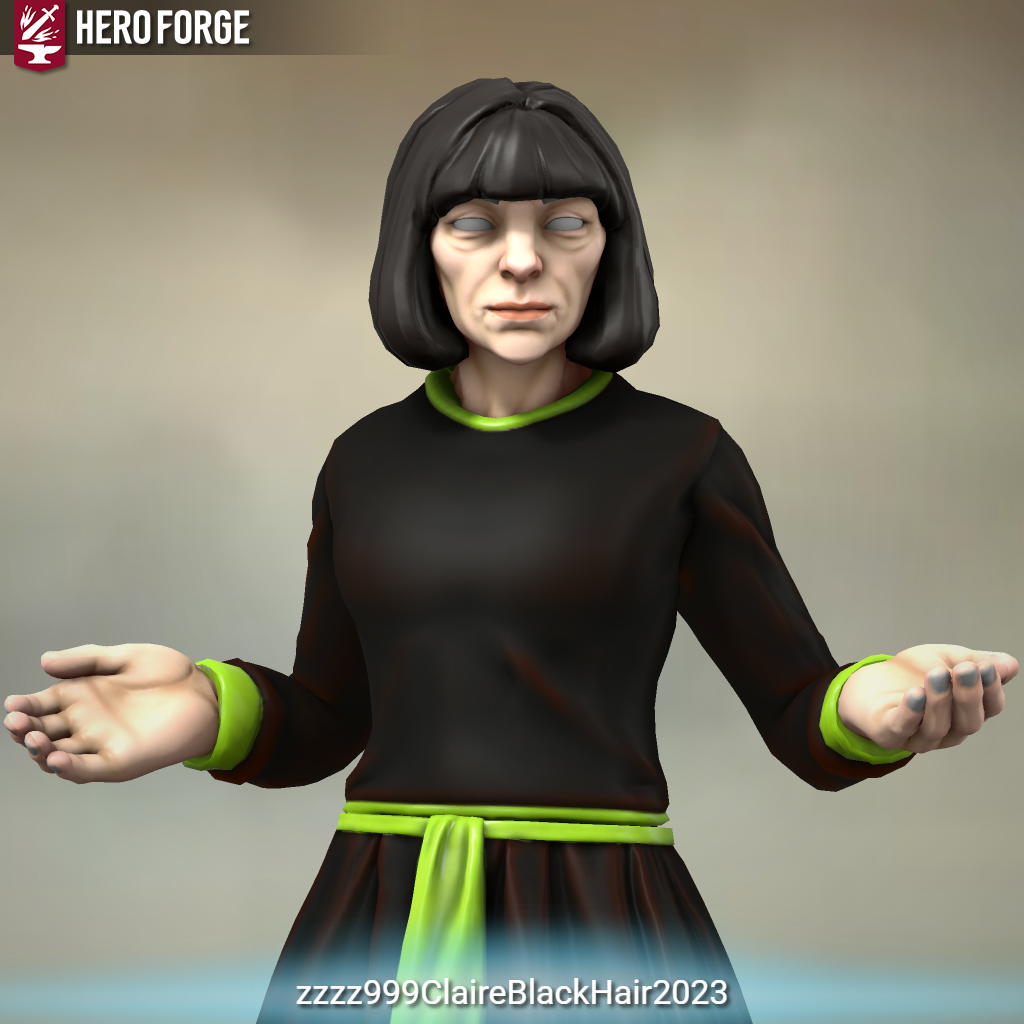Counting Down to the 2028 50th Anniversary of my first published book (September 23, 1978)
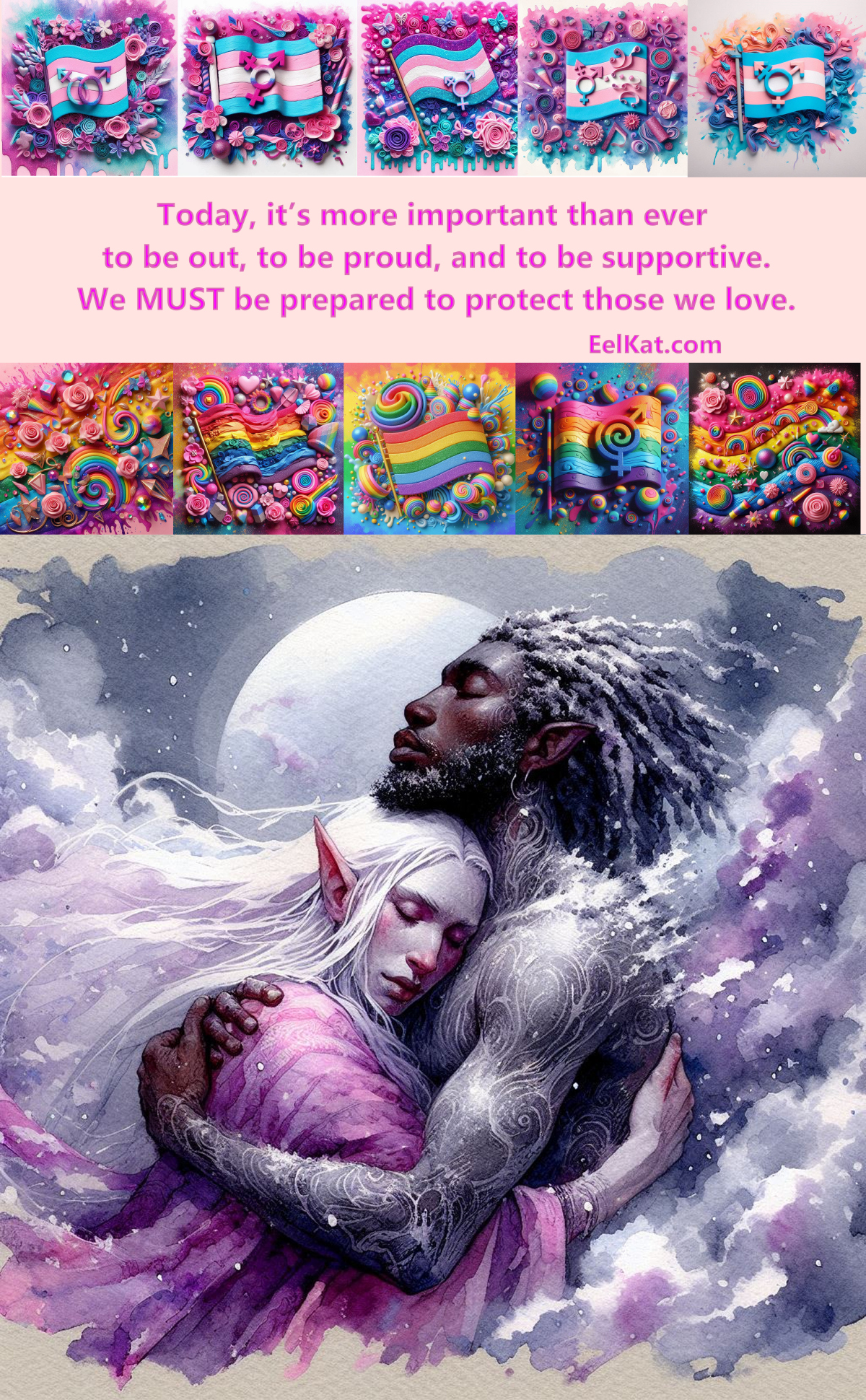 Transman Quaraun (The Pink Necromancer) and his husband King Gwallmaic (aka BoomFuzzy the Unicorn) King of The UnSeelie Court. Main characters of The Adventures of The Pink Necromancer series. Transman Quaraun (The Pink Necromancer) and his husband King Gwallmaic (aka BoomFuzzy the Unicorn) King of The UnSeelie Court. Main characters of The Adventures of The Pink Necromancer series.
This website is a safe zone for LGBTQAI+, pagans, polies, furries, and BIOPIC communities. |
Important:
Fraudulent sites are impersonating Wendy Christine Allen.
- The ONLY official website for Wendy Christine Allen is www.eelkat.com
Fraudulent social media accounts, particularly on Reddit and FaceBook are impersonating Wendy Christine Allen.
- The ONLY official social media accounts for Wendy Christine Allen are listed in the footer here at www.eelkat.com
Any websites and accounts you find online that are NOT on this list are NOT Wendy Christine Allen
World-building In The Quaraun Series: Creating a 1400's Fantasy World For Time Traveling Wizards
Important:
Fraudulent sites are impersonating Wendy Christine Allen.
- The ONLY official website for Wendy Christine Allen is www.eelkat.com
Fraudulent social media accounts, particularly on Reddit and FaceBook are impersonating Wendy Christine Allen.
- The ONLY official social media accounts for Wendy Christine Allen are listed in the footer here at www.eelkat.com
Any websites and accounts you find online that are NOT on this list are NOT Wendy Christine Allen
While you are here, please take the time to read this:
Do you know who this woman is?
She might be the woman who murdered my son.
World-building In The Quaraun Series: Creating a 1400's Fantasy World For Time Traveling Wizards
I am answering random questions today about world building, over on Reddit and decided to take my answers from there and expand upon them even further over here. So that's what this page is. Me rambling on about various aspects of world building techniques I use when writing the Quaraun series. The questions I am answering are embedded here. Clicking the link in the embedded question will take you to the original Reddit page where you can see the original answer along with other people's answers. If you wish to comment, you can do so on the Reddit page where a place to do so is provided.
The cities are almost never given names. The main character, Quaraun, (a rather absent minded wizard) has little interest in keeping track of such things are the reader sees the world through his perspective. Thus you end up with him simply saying things like "The Moon Elf Village" or "The Swamp of Death" or "The City of Slushies". None of which being the actual name of the city in question and the reader never learns what the real name is.
That said, the world itself is more or less an alternate version of Earth, with more or less the same countries, cities, etc. So you have things like the Roman Empire and Bethlehem and Mecca and Paris and London and Quebec and any other real life big city, more or less identical to the real world. The series is set in the 1400s, but contains time travel and so it's 2 wizards from the 1400s and one Dungeon Master inadvertently turned wizard from the 1970s/1980s who opens a real portal from our real non-magical world and gets stuck in the 1400s in an alternate D&D style magical version of our world. In his going back and forth between the two, he ends up taking lots of modern things to the past.

So you have Elf wizard characters from a fantasy 1400s before things like Boston exist, ending up knowing about things like real Boston, via the DM from the future whose stuck in the past with them.... if that makes sense. The past Elf wizards end up in our future Elf-less cities.
However, while these places may be mentioned in passing, such as when characters are reading a map and point out something like "we have to head towards Boston, but take a turn here 2 miles before we get there" the big cities themselves are rarely ever visited by the character (as he is on the run and trying to avoid places where his face is likely posted on wanted posters)
I think the biggest city you actually seeing them go to in one of the stories is Quebec, which thanks to the 3 bumbling wizards (2 who's magic doesn't work well in our future time [Quaraun and Unicorn]; and 1 who is a DM casting fictional spells out of a Dungeons and Dragons spell book [GhoulSpawn]) now has a flock of pink feathered zombie turkeys terrorizing it. Except for the rampant flock of brain gobbling turkeys, Quebec is pretty much identical to real life Quebec.
Boston is probably the second largest city they actually visit in one of the novels, but it wasn't present day Boston they arrived at, rather they arrived in the middle of the Boston Tea Party.
The largest purely fiction city, which reoccurs in many novels of the series, is probably "The Desert of the DiJinn", which is in medieval Persia and is exactly what the name says it is... a "lost" city in the middle of the desert, inhabited entirely by Di'Jinn. It's basically your standard medieval Persia, but inhabited by Di'Jinn instead of Humans. They are basically a "secret society" (think "The Illuminati") who are controlling the world through psychic powers and mind control, but no one knows it and no one sees them. They are a hive-mind race controlled by an "elder brain" (think Illithid/Mind Flayers). They pretty much do nothing all day but sit around in their temple playing mind games on Humans all over the planet. It's a hot, sandy, desert wasteland.
The Di'Jinn temple being situated in a little estuary oasis along the detla of a very "Nile-like" river. The only other life in the desert besides the Di'Jinn is a herd of little black Shetland ponies, that are really evil shape-shifting trickster Faeries (Phookas) who are trying to find a way into the Di'Jinn temple and steal the Elder Brain (which is in fact a tiny pink jelly fish, only a few inches across, known as "The Sacred Pink JellyFish").
The city itself is not very big and is surrounded by a perpetual sand storm so no one can find it. But while it is itself "isolated" and cut off from civilization, the entire area around the desert, is a vast "Arabian Nights" x "Ancient Egypt" style human metropolis, with huge pyramids and mosques, a palace, lots of adobe style huts kind of built on top of each other, travelling caravans scared about, a huge Gypsy (not Romani, who are different from Gypsies) camp with thousands of people spread across multiple clans, a port on the ocean, rich merchants, pirates, shady market places, etc, etc. The majority of the Human population is the Gypsy caravan, who pretty much run the area, while the actual monarchy doesn't really do anything. The area is super peaceful, no wars or anything; kind of a "Utopia" within what is a mostly war-torn hostile quasi-medieval world setting.
The Desert of the Di'Jinn is actually the place where the main character grew up and he lived with the Di'Jinn thus how he became a wizard, so this region gets mentioned frequently in almost every novel.
Other then that, though, most of the places actually seen in the novels as actual settings the stories take place in are pretty small. Usually coastal Maine or Nova Scotia fishing villages, with fewer then 500 residents each. In most novels, the entire story takes place inside a single building, often a bar/pub/tavern/inn/bed&breakfast, without the characters ever going outside to "experience" the town they are in.
Overall, the series doesn't have a lot of scene descriptions and you don't see too many cities actually described in detail, because the series is character driven rather then plot driven.

So that above, was the original question, I answered and my original answer as it appeared on Reddit... but, after I left Reddit, had myself a bite to eat, and then came back to my computer to write, I couldn't stop thinking about the fact that very few novels in the Quaraun series ever go into any depth of detail into the world he lives in.
That is perhaps one of the things which makes the series rathe uniquie in some ways, because it is largly dialogue based, character drive, written in a very much stage play formate of almost straight up none-stop conversations, with very little narative or descriptions at all.
When there are descriptions, they tend to be in the space of 2 or 3 paragraphs right at the beginning of a new location, to set the scene of where they are, and then jump right into the dialogue and never again do you see a block of narrative text for the next 100 or so pages, with each novel being around 300 pages long.
Now, no reader has ever complained about this.
Readers have certainly complained about other parts of the series, that's for sure. The Quaraun series is by far my most hated, most bitched at, most criticized, most complained about, and certainly my most banned series ever, and even ranks as the first book in American history to be banned by the American government via a First Amendment violating court order issued by the town hall of Old Orchard Beach, a branch of the USA government, who have declared the Quaraun series "too gay for the family friendly town of Old Orchard Beach". So, yeah, there are certainly no lacked of complaints about the series. But this way I go about writing only a few hundred words of narrative for every 20,000 or so words of dialogue, is something not one reader has ever brought up in a negative light.
Quite the contrary, I've had several readers say they liked the fast flow of dialogue and the fact that the story stays with the characters beginning to end, never taking a break from hem to look around.
In any case, I am left to wonder... would readers complain if I started including more narrative scenes and more description of the world Quaraun lives in, or would readers rather I left to writing it as I do now, and allowing their imaginations to fill up Quaraun world as their own brains see fit?
Sounds like Maine and Quebec. :P Most of what I write is set in Maine and/or Quebec because that's where I grew up.
A reader asked me once:
"Why is he (main character, Quaraun) always sick?"
I wrote back and answered:
"Because he lives in Maine. He's trudging through 3 feet of snow, 8 months of the year. You'd be sick all the time with cold wet feet too!"
Another reader asked me once:
"Why is there so much snow in all your stories?"
I answered:
"*Reads question. Looks out window. Can't see outside as the snow is too deep and goes over the roof of my house. Tries to think of answer for reader. Writes back -'I write what I know.'*"
Above, was the original comment, I answered and my original answer as it appeared on Reddit... now for further comments added here after the fact.
It occurs to me, that while in my previous answer to the question above, which detailed a vast hot desert metropolis, that you actually very rarely see hot or even remotely warm, weather in the Quaraun series.
I especially noticed this fact when CosPlaying secondary character BoomFuzzy the Unicorn, at PortCon Maine this summer.
Because of the extreme cold of the primary setting of the series (Inuvjak, Quebec) Unicorn is usually seen in a cloak made of black fur, covered with a hooded cloak made of dozens of various animal pelts.
I have and wear both of the fur coats described in the novels. And in the winter, I really do wear them and it's a nice 80F inside that fur coat, even when it's -40F degrees (as it often is here). But try wearing that thing on a 90F heatwave (which rarely happens but did this year) in June!
I did just that.
I tossed the 200 year old fur pelt patch hooded cloak (which you often see me wearing in my YouTube vlogs) back in the closet and went with just the black fur cape, seen below.
By the 2nd day of the convention I was without the cape.
And by the 3rd day of the convention I was without the wig as well.
In the winter I can and do, wear this outfit every day, and thus I know how to describe moving, walking, and doing every day things while wearing this outfit. With the winters we get, you WANT and NEED an outfit like this if you are going to be moving around outside. But wear it in the summer? Nope. Not gonna work.





Being a Fashion History/Dressmaking & Design Major, one of the things that pisses me off about various fantasy novels, movies, and especially video games is the levels inaccuracy in the fashions of the world. By this I mean, women prancing around in metal bikinis in a sub-zero arctic region, just to show off her cleavage. Okay, if shes on a beach or in a jungle, the bikini matches the weather, but, when it's below zero with howling winds, knee deep in snow, and the men are huddled up freezing their asses off wrapped up in furs, why the heck is the woman prancing around half naked, freezing her tits off and acting like she is immune to the cold?
Now if you've read the Quaraun series you know Quaraun wears extremely impractical, often super slutty cloths, which rarely are appropriate for the weather he's in. However, you also see him suffering the consequences of this vanity, by having sniffles, shivering, complaining he's cold then refusing to put a coat on, wearing high heels in a blizzard then getting sick from cold wet feet the next day. Yes, he's running around like a scantily dressed, half naked slutty whore of a prostitute in the dead of winter, but he's not doing so without suffering the heath consequences that go with such foolishness.
Unicorn on the other hand is wrapped up in furs on top of furs and warm as a clam on a hot summer day. He's also laughing at Quaraun and picking on Quaraun's hugely inappropriate fashion sense every step of the way, while also offering the poor half frozen Elf a for cloak to wear, which the vain, slutty Elf is refusing to take on account of it'll hide his figure and he's got one hell of a figure to show off.
This aspect of Quaraun's character, specifically makes fun of the bikini clad babes that you see fighting half naked, knee deep in snow, along side their fully fur wrapped male companions, which you see on almost every 4th ED Dungeons and Dragons book cover.
I think, when building your world, fashion should be a part of the world building process, at least to the extent that characters are dressed appropriately for the weather they are in, or are suffering the consequences of being inappropriately dressed.
And as with the cold weather being unfit for scantily clad bikini babes, so too is the desert. In fact, even more so. Have you ever noticed how desert cultures always wear very similar long flowing dress/robe/caftans - both the men and the women, along with wearing veils, again, both the men and the women doing so?
It is not by chance that every single desert culture across the planet does this. This type of fashion, protect them from sunburn, heat stroke, and the frigid cold at night once the sun sets. You never see exposed skin or skin tight clothing, and you never see pants. The loose cloth acts as an air conditioner, holding cold air around your body. The more layers of robes you wear, the more layers of cool air get trapped in between each layer. In a desert, you are actually cooler if you wear 4 or 5 robes on top of each other, then if you wore just one.
As for pants, you won't walk long in a desert wearing pants before you realize sand gets into every nook and cranny, and especially likes to get stuck in the folds of skin where your legs meet your torso. Pants then hold that sand there at "the panty leg line" and after 20 minutes of walking in pants, you'll be sand papered red, blistered, and if you don't stop and pull those pants off fast, those blisters will start bleeding, and you'll be on your back for 2 or 3 weeks waiting for those burning welts to heal. (Remember - wounds heal VERY SLOWLY in a desert region as the heat slows your bodies ability to fight infection, making you heal slower and causing you to become infected.
How often do you see a novel describe "hot sweltering nights" in a desert region? You know that author never set foot in an ice cold desert at night. As hot as a desert is in the day, it's just as cold at night. Sand cools fast without the blazing hot sun keeping it heated.
And did you know, that the head wraps and veils are soaked in ice water before putting them on their heads? Then, as they cross the desert, they not only stop to drink from their water pouches but also pour the water over their heads to re-wet the veils?
Plus the veil is not just tossed over your head, but they've got a wadded up cloth, soaked in water, on top of their head, under the veil.
The same actually applies in super cold regions, where again, you often see lots of layers, loose fitting, and no pants. Scottish Highlands and Japan are two prime examples of this, where you see very cold weather and men who do not wear pants but in stead where a large blanket-like cloth, folded and belted to their waist.
In Scotland this is known as The Great Kilt (which s quite different from a kilt/skirt more commonly seen today), while in Japan it is known as the Hakama.
Side note: If your character is Scottish in any time period before the 1500s, keep in mind the Scots of Medieval times were the Picts of Alba, and they were black skinned with whooly hair. The NATIVE/TRUE Scotts were NOT white skinned, red haired, green eyed Celts, who would invade Scotland in the 1400s,
The Picts are the "Native" or "Aboriginal" tribes of Scotland, whom the Scots of today have no DNA blood relation to. The Scots of today are the Roman DNA Celts who invaded Scotland and murdered the Native Scots.
Also the native Scots were very short. Most women were around 4'5" and most men around 5'. They were very tiny, almost small enough to be called pygmies. Remember... they RODE those little Shetland Ponies into battle. Shetland Ponies, small as they are, were plenty big enough for Scottish warriors to ride on. Some of the bog mummies that have been found were only 3 feet tall, and originally thought to be children, but are now known to have been full grown men.
Long touted as mythical folklore, the "Little People" of Scotland are now known to have been very, very real. (In case you're wondering, while in college I was studying them, and actually got to see in person for myself, 3 of these tiny bog mummies, including the 3 foot tall one I just mentioned. They are now today on display in a museum in Portland, Maine if you ever want to see them for yourself.)
A little waif of a white skinned, 10 year old European princess is going to be several inches TALLER then the chubby, black skinned, full grown adult Scotman, of Medieval times.
The Scots of Medieval times were the Picts and were a COMPLETELY DIFFERENT race of people then the Scots of today.
Remember, most of Europe avoided Scotland like the plague in Medieval times due to it's being inhabited "by little dark savages".... Europeans told nightmare tales of "the swarthy skinned little men" who inhabited the hills of Scotland.
Did you read that side note?
Good.
I put it there for a reason.
That reason being that this page is intended to tell you very specifically, how it is I go about my world building for the Quaraun series which is set in the 1400s in Maine (which was called Quebec until 1881, Maine did not exist in the 1400s)
The main characters of the series are a pair of Gypsies:
- one a Frenchman (Quaraun) who was taken in by Persian Gypsies as a child and was raised as one of them, though he technically does not have Gypsy DNA.
- the other (King Gwallmaiic aka BoomFuzzy the Unicorn), being a very short, black skinned, Asian Scottish King, and is in fact a Pictish-Persian Scottish Gypsy, portrayed accurately
Unicorn is only 5'1" tall, has a thick set stocky build
And yes, that does mean, those photos you just saw were of a "white" woman, CosPlaying a black man. In actuality I am not as "white" as people think I am, because I am my self in fact a Pictist-Persian Scottish Gypsy.
SIDE NOTE: The Medieval Scots wore kimono looking silk robes and pointed red shoes and the great kilt has far more in common with the hakama then most people realize.
In around 800s, a group of Jewish, Persian Gypsies settled in Alba and intermarried with the Picts.
Because of this is was not uncommon from 800 to 1400s to see Black-Asian Scotsmen wearing silk kimono under their woolen great kilts, and wraped in fur animal skins.
The Picts often painted their skin with blue and red patterns, were frequently tattooed, had huge ropes of dreadlocs, and practiced the art of shrinking heads, with clan kings often having many heads of their enemies hanging from their belts.
This group would go one to break into 3 groups:
- The Scottish Gypsies
- The Tinkers
- The Scottish Travellers
Medieval Scotland had a very "Native American Indian" lifestyle, with small tribal clans, living in very mobile tent/yurt/tee-pee structures.
If your Medieval world is Scottish, your character would have worn silk kimono and fur skins, had black skin, sported dreadlocks and tattoos, and lived with with their family in a small tent like structure that could be set up and taken down in minutes, and was only used for sleeping in.
His family would have moved seasonally following herds in winter, and heading for orchard regions in summer. Keeping in mind oranges grow in Scotland and would have been one of the fruit she commonly eats when they were in season.
His family would have been DRAMATICLY different from the rest of Medieval Europe, as they would have been horse breeders, with vast herds of tiny Shetland ponies, and they would have been hunter/gathers, not farmers.
He would NOT have lived in a castle, though some clans did build small round stone huts with leather skins for the roof for use in winter and migrated to those.
He would NOT have had servants.
Depending on his clan, he might have been well versed in either the Torah or the Koran/Quarn.
Being half Hebrew (black "Bible" Jew usually on her father's side) he would be seen by most white Kasha Jews as "an Elohem Mongral".
These Persian Hebrews, because their Hebrew fathers had married Persian women, were cast out of Jewish society and no longer recognized as Jewish. For a while they lived with their Muslim "cousins", but were cast out of here too for their refusal to become Muslim. Most of them practiced a form of witchcraft called "Hoodoo". They were known by most people as "The Magi" or "Magicians" and practiced Astrology, divination, Necromancy (channeling the spirits of the dead), and used gemstones for scrying.
They are what is know by most Americans as "the classic Gypsy fortune tellers". They have no relation to the Romania Gypsyes who come from India and Spain.
They left Scotland in around the 1300s to 1400s, staying in Egypt for a few years, where they were called by the Europeans "The Gypsies" which means "the people who live among the Egyptians".
In the 1500s when the Romani arrived in Europe, they were mistakenly refereed to as Gypsies due to the similarities of their dress and culture. However, the Romany are NOT Gypsies and the Gypsies are NOT Romani. The two groups are completely separate cultures/races/ethnicity.
If your Medieval character is Scottish, he would have been deeply religious, with knowledge in the Bible, the Torah, and the Koran, but would be a devote practitioner of extremely "pagan" witchcraft like spiritual worship. His focus would be not on worshiping a deity, but rather on paying respect to the DiJinn (Persian Faeries) and Faeries (2 very similar types of nature spirits.)
Everything he does, from eating, to milking the cow, would be done by first kneeling to say thank you to the spirits. He will be praying on beads, multiple times every hour of the day. His religious customs would look very "Muslim" to most Christian, though he would not himself identify as Muslim.
As they put no value in material wealth, even the Kings had no houses and lived in tent like structures, the kings being more tribal chiefs then actual kings.
Sadly most novels, movies, TV shows, and games do very little research into ACTUAL medieval Scottish history.
They take a Victorian Scotsman, toss him into a Renaissance Scottish castle and CALL THAT "medieval Scotland".
They completely fail to look at the fact that Scottish Castles were not built in the medieval times, but were built almost a thousand years later in the Renaissance times.
- In Medieval Alba (Scotland) white men did not exist.
- In Medieval Alba (Scotland) red heads did not exist.
- In Medieval Alba (Scotland) tall burly men did not exist.
- In Medieval Alba (Scotland) green eyes did not exist.
- In Medieval Alba (Scotland) kilts did not exist.
- In Medieval Alba (Scotland) plaid tartans did not exist.
- In Medieval Alba (Scotland) castles dd not exist.
Medieval Scotland was 1 A.D. to 1300.
The Celtics did not invade until 800.
It was 1000 when white men started to become the norm, but then only in the LowLands not in the Highlands.
Movies and novels always set their stories in the 1600s to 1800s Scotland and call THAT "medieval."
What nearly every single novel and movie calls "medieval Scottish Highlands" actually took place a full THOUSAND YEARS AFTER the medieval time period had ended, and has absolutely nothing to do with MEDIEVAL Scotland at all!
A Medieval Scotsman, was short, stocky, chubby, black skinned, brown eyed, had whooly dreadlocs, and wore a combo of silk kimono and hakama with wool capes and furs, tall pointy red hats and long pointy red shoes.
They completely over look the fact that in medieval times Scotland was still known as Alba and it was a wild, savage, unexplored island inhabited by "little men" and "dark savages" aka black skinned pygmies, who usually wore red silks and were known as "FaerDarrigs" by the Welsh and "Leprechauns" by the Irish.
Yes. Real live Leprechauns. "little men who make shoes" is what the word Leprechaun means, and the Persian Hebrew Gypsies were known for making embroidered red silk shoes with curly point toes.
The shoes looked like THIS ---->>>
Those were what medieval Scottish shoes looked like.
A far cry from the black leather Celtic dance shoes most people think of when they think Scottish shoes isn't it?
This is something that really bothers me.
It really bothers me a lot.
In fact it bothers me so much that it ranks as one of the top #1 things that I get upset over.
See?
Look at that style shoe.
It REALLY stands out.
The Celts didn't have shoes like that. It's why they were all:
"OMG LOOK AT THOSE FREAKING FREAKY SHOES THOSE LITTLE TINY DUDES MAKE! OMG! LEPRECHAUNS! OMG! BLACK SKIN! OMG! RED SHOES! OMG! EVIIIIIIIIL!"
Irish people, British people, Welsh people, their shoes looked like this:
Look at those shoes.
Those are TYPICAL medieval shoes.
They ain't nothing to write home about.
Every one in medieval times had shoes like that.
But then suddenly you got Catholic Irish folks grabbing their crucifix and begging for God's mercy because freaky little men with red shoes show up. Beware those evil little dark skinned, red coat wearing, makers of the pointy red shoes, for they is black and therefore are demons and the proof in the pudding is those sinful red shoe straight from the belly of hell itself.
(Side note - Leprechauns wearing green is an AMERICAN invention from the 1850s; prior to that they were always said to wear long loose fitting red coats and pointy red shoes.)
And so when this troupe of tiny black skinned, Asian horsemen were found in Scotland wearing shoes like this:
Well they just had to be EVIL! I mean come on: black skin and red shoes? How much more "demonic" could they be, right? We all know how white people think. Anything black or red MUST be evil, so black people dressed in red was a great big, bad double whammy.
And so you had people who were terrified to get near Scotland because it was inhabited by the little evil men, with black skin and red shoes, who were casting magic spells, and riding tiny Shetland ponies, and stole babies, and broke into your house at night to steal food, and steal your blankets, and steal you....
.... ever wonder where, how and why the rumor that Gypsy = Thief got started?
Yep.
Leprechaun folklore was the tap root source of the Gypsies being wild baby stealing, curse wielding, trickster thieves with dark skin and funny red shoes.
I mean this is the ACTUAL history of medieval Scottish Highlands and white authors, white film directors, they just would rather ignore it completely and white wash Scotland the same way they cheer white power and white wash everything else.
But why of all the cultures to be white washed does this one in particular become the one that is my personal pet peeve?
Because these are MY PEOPLE.
I am a Scottish Gypsy of the Pictish-Persian-Hebrew bloodline. And when white authors and white film directors try to white wash this particular part of history, they are essentially pointing straight at me personally and saying to me:
"You don't deserve to exist, your family history doesn't deserve to be remembered. You are unworthy, so we are going to pretend your people were never here, never real, and we are going to toss these far better big burly, red head white dudes in your place."
THAT is why that pisses me off.
BITCH TIME: I think my #1 biggest, top pet peeve with "Historical Romances Novels" is when they write "Medieval Highland Romance" and have some big, green eyed red haired white dude in a kilt, carrying blond waif off to his castle. You can not get any more historically INACCURATE then that!
In Medieval Alba (Scotland) white men did not exist. Red heads did not exist. Tall burly men did not exist. Green eyes did not exist. Damns kilts did not exist. Plaids tartans did not exist. Castles dd not exist.
Medieval Scotland was 1 A.D. to 1300.
Movies and novels always set their stories in the 1600s to 1800s Scotland and call THAT "medieval."
What nearly every single novel and movie calls "medieval Scottish Highlands" actually took place a full THOUSAND YEARS AFTER the medieval time period had ended, and has absolutely nothing to do with MEDIEVAL Scotland at all!
A Medieval Scotsman, was short, stocky, chubby, black skinned, brown eyed, had whooly dreadlocs, and wore a combo of silk kimono and hakama with wool capes and furs, tall pointy red hats and long pointy red shoes.
Over time the silk kimono and hakama would evolve into the plaid great kilts and the liegn.
What we know as Scotsmen today, are nothing more them Englishmen who migrated to Scotland in the 1500s and were of no DNA relation to the actual aboriginal native Scotsman (the Picts) of medieval times who cross bred with Persian Jews to create the Gypsy race.
What we know as Scottish Highland Dress today, was invented by the British, in the 1800's and bore no resemblance to Scottish dress in medieal times.
Now granted the Quaraun series is not something you look at and say "Hey! That's historically accurate!"
No. Far from it.
However, one of #1 biggest complaints I get from readers of the series is the fact that:
- #1: Both main characters are Gypsies but don't "look" like or dress Romani
- #2: The Scottish King has black skin.
- #3: The Scottish King wears silk kimono and silk hakama under his fur pelt capes
I've gotten dozens of emails complaining: "There is no such thing as a black Scotsman" and "Scotland never had a black king" and "Scottish men wear kilts not hakama"
If you don't know what a hakama is, it looks like this and yes we Scottish Gypsies do wear them. I have several of them and wear them under my silk kimono, which yes I also wear, you know, me being an ACTUAL Scottish Gypsy and all, so that would be how I know what our culture really does wear.
Here is what a hakama is --->>>
Much longer and much wider then a kilt, it is essentially the exact same thing, pleated and folded as you tie it to your body.
Traditionally a hakama was a "skirt" and did not have "pant legs". The typical "pant leg" feature you see today became common place in the 1500s.
In medieval times, men wore black hakama, while women wore red ones.
And it is very historically accurate for a medieval Scottish King to be wearing black hakama as King Gwallmaiic aka BoomFuzzy the Unicorn, does.
The pictures you are looking at right now are historically accurate clothen for a man of medieval Scotland, where lived Asian Gypsies who brought the fashion to Alba (Scotland) with them. The kilt would develop years later as a result of the introduction of a hakama into the region by nomadic Asians.
No. I'm sorry, but this is a MEDIEVAL Scottish King and if you loo at Scotland's MEDIEVAL history, Scotland had multiple black kings in the 1200s to 1300s. The ruling aristocracy of the Highland region of Scotland was black in MEDIEVAL time period.
No, it was not a large group. Yes, most of them were slaughtered by the white men during the Celtic invasion.
In the 1530s all but a few hundred of these Black Scottish Jews were gathered up and executed. The few hundred that survived were marooned on a itty bitty worthless island that had recently been discovered... it was called America and was thought to be a tiny snow ridden wasteland not even big enough to hold a few hundred people. Which is because they were looking at Nova Scotia and missed seeing the bigger chunk of land behind it.
We intermarried with the Kickapoo Native Americans and today there are about 2,000 of us still alive. Still here on the exact same spot we was marooned on in 1530.
AND if you look at the paintings and statues from the actual medieval era of actual highlands of Scotland (not the low lands where the white British lived), you see black faces and silk robes in every one of them. No white skinned red heads or tartan plaid kilts anywhere.
No, not all of Scotland was black, no it was not a big group, in fact it was a very small minority that only lived in the mountains of the Highlands, no they did not rule of Scotland, but rather these kings were more like small tribal chiefs of little bands of people. But the fact remains Scotsmen FROM THE HIGHLANDS of Medieval times, were black-Asian-Jews, they were very short and the white Celts referred to them as FaerDarrigs and Leprechauns, and considered sightings of these rarely seen little black men to be a very bad omen. They kept to themselves, stayed in the mountains, and rarely associated with any one outside of their own personal group... as we still do today.
AND The Gypsies and the Romani are two completely separate and totally different races from different parts of the world, with vastly different cultures.
Gypsies ARE NOT Romani
Romani ARE NOT Gypsies.
And when you meet a real live Gypsy face to face they will always be quick to say "I'm Gypsy not Romani" while likewise every time you meet a real live Romani face to face they will say: "I'm Romani not Gypsy."
You can tell the FAKE Romani and FAKE Gypsies by the fake they they call themselves BOTH Romani and Gypsy interchangeably and try to tell you both words mean the same think. (Looks at the TV show Big Fat American Gypsy Fakers Wedding.)
For people who ask, because people always do... the "Gypsies" on Big Fat Gypsy Wedding are Rumniechelles.
A Rumnichelle, is the child of a Romani who married a white person. They are half Romani and half white, and have no Gypsy DNA at all.
And while we are on the topic of Gypsies, because every one who write medial fantasy always has to toss us Gypsies in their novels and they NEVER get us right...
Let's look at My Big Fat American Gypsy Wedding for a second.
People who meet me are always asking me: "So, you're a reall Gypsy... tell me, do you really wear those big flash rhinestoned wedding dresses?"
Yes and no.
Yes we do traditionally wear rhinestoned wedding dresses.
No, they look NOTHING like what you see on My Big Fat Gypsy Wedding TV show.
Big Fat Gypsy Wedding shows you dresses like this:
Anyone who has an once of brain, knows those are Spanish and Mexican style Quinceanera wedding dresses.
While the Romani are Indians who migrated to Spain and have Indian/Spanish DNA, we Gypsies are Persians Jews who migrated to Scotland have Persian-Hebrew-Scottish DNA.
The Romani, being Spanish, wear the big over the top rufflely pouf dresses.
When in fact, what we REAL Gypsies actually wear, is called a Alabiya Jalabia and looks like THIS:
Okay, so now that we've had that side rant of black Scotsmen and Gypsies, you are probably wondering why I chose to leave that here on a page about world building rather then give it it's own page?
Why?
Well, because, I wanted to show, that as cultures migrate, things get brought from one side of the world to the other and gets adopted by cultures who did not originate it.
Think about it... who the Scots ever have thought to create a kilted skirt, has Asians not brought the hakama to Alba in medieval times? Probably not. You see then, how much Scottish culture was effected by the introduction of clothing items from another culture.
Silk was worn by the ones who arrived from Persia, but their children and grandchildren had no way to make silk in Scotland where no silkworms existed. Thus kimono started being made of linen and hakama started being made of wool. Wool is quite a bit heavier then silk, and difficult to wear, so the hakama was shorten to become the kilt we know today.
Here you see the evolution of a garment that was brought from the other side of the world and then adapted to be made out of local materials.
So why have I brought this up?
Well, you remember when I said this...
BITCH TIME: I think my #1 biggest, top pet peeve with "Historical Romances Novels" is when they write "Medieval Highland Romance" and have some big, green eyed red haired white dude in a kilt, carrying blond waif off to his castle. You can not get any more historically INACCURATE then that!
My pet peeve here is not that they wrote it that way, but rather that NO ONE ever writes in any other way.
The fact is, Scotland had a vast range of cultures.
Black pygmies who married Persian Jews, was just one of the hundreds of cultures seen in Scotland.
Most white people were in fact Kasha Jews not Celts, in the early medieval times, as Jews were being heavily slaughtered in most of medieval Europe.... keep i mind the REASON Jesus was crucified in this time period (yes, don't forget Jesus was alive in the medieval time period!) was because of the vast anti-Jew sentiment that was sweeping Rome and Britannia in Medieval times.
In early medieval times there were almost no white people in Scotland and this was why many blacks, Jews, and other persecuted races fled to Scotland. Of course the Celts (a group of white Romans) would soon invade Scotland and slaughter every non-white they could find, lead by Saint Patrick, who killed all those evil black Jewish snakes. (You do realize Saint Patrick wasn't killing ACTUAL snakes when he did his infamous snake massacre right? He refereed to black Jews as snakes, you know because he was white and Christian and it's good white Christians do, or so he thought.)
No. The problem with that pet peeve is it erases the actual history of Scotland and replaces it with a white friendly history of Scotland. It treats none white cultures as though they did not exist, when in fact, white culture was the extreme minority in early medieval Scotland.
Well, for you the author, creating a world for your next novel, what tis tells us is that certain cultures are treated as inferior, because the culture erasing them feels inferior themselves and is therefor threatened.
It tells us as authors, that when we create out worlds, we need to fill it with cultures of all times, even the arrogant murdering upper class that seeks to erase the existence of all cultures not their own.
It tells us that for centuries, thousands of cultures have been persecuted and terrorized by one vicious parasitic culture, that drives other cultures off their homelands, chasing them to all points of the globe in their vicious attempts to murder every last one of them, and that this in turn results in things from one culture being brought to other cultures - like the hakama, which would eventually become the kilt.
It also shows us why certain cultures mix. Two small cultures, both are being slaughtered left and right by the evil aristocrat culture, bringing the two smaller cultures near to extinction, resulting in their desperate attempt to fight for their lives and stay alive, by joining their cultures together as one, intermarrying.
And so, because on race of vicious, evil, blood thirsty bullies tried to murder everyone not a carbon copy of themselves, you see the smaller persecuted cultures attempting to fight for survival by joining forces and fleeing across the planet, bringing their native culture to other parts of the world, resulting in Jews who then became Asian Jews who then became black Asian Jews, and eventual became Gypsies.
I say all this, because this is the sort of thing you need to look at when creating your world for your own novel, novel, game, whatever.
Think about it:
Native cultures adapt to their surroundings. Remember when we talked about how women warriors of the cold North don't wear bikinis and desert dwellers don't wear pants? There are reasons wy these sorts of things happen, and it is always because of the local weather and geography.
People adapt to match where they live. Cultures grow based off how the people interact with the land.
Every society that lives near a volcano, has a mythology about fire gods or thunder gods who live on mountains. Every society that lives on the coast, has mythologies about merfolk and water gods.
When a group moves, they take their culture with them. Then their culture effects the cultures of others.
Think about it:
If the Jews had not cast out the men who took Persian wives, they never would have wandered their way to Scotland, never would have introduced the hakama to the highlanders, and the kilt never would have been invented.
Think about how much history was changed, just by one king telling a few men of his region: we shun you because you married outside of your race.
And so, while you are creating your world, think about the geography it has, the weather patterns, and how those things affected the people who live there. How does prejudices, bullies, wars, and bigotry cause people to flee their homes and seek refuge elsewhere? How did this move change the regions they passed through?
How does each culture evolve as it encounters each other culture?
What if buttons and zippers had been brought to Scotland instead of hakmas? Would the fashion of the country become high button collars and zipper backed dresses, instead of a skirt that is pleated and folded and tied to the waist?
How did your world in your books evolve? How did it's cultures change? One only has to look at our very real world to see this evolution of cultures in action.
In a series like the Quaraun series, which features time travel, you end up with quite a bit of anachronism to deal with as well. Such as the seen where Quaraun and Unicorn (who live in the 1400s - which is NOT medieval time period by the way, but both characters are centuries old and were born in medieval time so still dress and act like they are in medieval times) encounter a scientist from the future, who is sitting by the side of the road typing away at his laptop computer... in the 1400s.
Because the Quaraun series includes time travel, I have to deal with how his world is effected by things from the future being brought back to the past.
For example, the wizards are your typical medieval wizards, not that magical, until they get a hold of a 4th edition Dungeons and Dragons "Advanced Archana" Dungeon Master's guide book, and set out to doing the very over the top fiction spells and actually make them work. It completely disrupts the world to have a pair of real live wizards, casting real live spells they found from a fiction game manual that was accidentally left behind by a time traveller.
I now have to look at real world changes from our own history, such as the hakama's introduction to Scotland inspiring the invention of the kilt, to determine, how the the fictional world of Quaraun's universe become changed when items from the future are left behind in the past?
This is where studying the history of the real world culture who most closely matches your fictional culture comes in. And in my case is why I used the example of the hakama becoming the kilt, because Quaraun's world is based largely off the history of the Pictish-Persian-Jewish Gypsies.
On Writing The Quaraun Series
World-Building In Bizzaro Dark High Fantasy Yaoi
Weird-Building In Bizzaro Dark High Fantasy Yaoi
Building A Magic System In Bizzaro Dark High Fantasy Yaoi
- Wizards vs Witches vs Sorcerers: How are they different?
- Magic Systems and How to Build Them
- Necromancy: How will resurrection affect society as a whole?
- Spell-casting Side Effects of Magic
- Necromancy FAQ - A Real Necromancer Compares Fantasy Necromancy With The Reality
- Colour Magic - Gypsy Style
- Beware of White Men In Gypsy Clothing: Fake Psychic Scams
- Child Sacrifice in Fantasy Novels
Plotting & Writing Bizzaro Dark High Fantasy Yaoi
- Ernest Hemingway Style of Writing Literary Fiction Used In Epic Fantasy Novels
- Do you write a novel start-to-finish?
- Ideas, Ideas, Ideas (Where Do You Get Them?)
- Should I plan for ending or just keep writing?
- NaNoWriMo Overachievers: How did you do it?
- How Long is 50,000 Words?
- Why Write 50,000 Words In 30 Days?
- How long does it take to hit 1667 words?
- Average Typing Speed
Character Creation In Bizzaro Dark High Fantasy Yaoi
Writing Sex In Bizzaro Dark High Fantasy Yaoi
Disabled Characters In Bizzaro Dark High Fantasy Yaoi
Drug Use In Bizzaro Dark High Fantasy Yaoi
Horror In Bizzaro Dark High Fantasy Yaoi
What Is This Site?
I'm an author. This is an author home page. It's about me, my life, my books, my hobbies, my home town, and anything else that applies to me and my life.
Since starting my writing career in 1978, I have written 130+ novels, 2,000+ short stories, 6,000+ non-fiction articles (ALL are found on this site), a few dozen stage plays, 12,000+ blog posts, and a few comic book scripts for Disney's Uncle Scrooge and Donald Duck (I only worked for Disney one year (in 2005) and only wrote a few stories for their Danish comic books).
NOTE: I ONLY write the Quaraun series (aka The Twighlight Manor series aka The Adventures of Quaraun the Insane). In recent years there has been an issue with impersonators trying to pass books off as written by me, notably several non-fiction and Erotica books. I write neither nonfiction nor Erotica.
ALL of my books and their cover arts are listed on my website here. Beware of any books you find claiming to be me. If the books are NOT listed here on my website, they are NOT my books.
In fiction works, I specialize in Weird/Bizarro Tales set in 40th century CyberPunk-Quasi Medieval, Cozy Dark Fantasy and Science Fiction worlds featuring an intersex Elf and his Faerie husband main characters. I DO NOT WRITE ANY OTHER SERIES - THIS SERIES IS THE ONLY ONE I WRITE.
Non-fiction (found ONLY here on my site) is daily updates of events in my life, and how-tos on how I write my novels.
I DO NOT write Erotica.
I DO NOT write books with HUMAN characters.
The Erotica books and books with Human characters, that you are finding, are written by scammers trying to impersonate me.
There is an ongoing FBI investigation into this matter. If you find any such books, please report them to FBI Agent Andy Drewer @207–774–9322
People always ask why I have a video recorder running 24/7. Watch these 4 videos of The Scarborough Walmart.
I have a video recorder running 24/7. Because this parking lot is where I was attacked a second time by the woman who crippled me with the golf club at Southern Maine Community College in 2013 (who also murdered my 8-month-old son at the same time) this is the location of her 2nd attack, the July 2016 attack with a shopping cart, the attack that left me in a wheelchair and despite over 200 "security cameras" and signs saying there are cameras in use... the police did not find even ONE actual REAL camera. Every "security camera" on this building and parking lot was ALL fake "dummy cameras" and that is why there is no video footage of my son's murderer.
I started carrying a camera 24/7 the very next day after Scarborough police informed me they could not identify the blonde woman who attacked me or her gold Volvo 240GL station wagon, because EVERY CAMERA at this store's parking lot was an empty case with no real camera inside it. My son would be 12 years old this Christmas 2025, and his murderer walks free, still unidentified because this parking lot did not have real cameras.
Those things that look like cameras on the building and light poles, are fake, according to the Scarborough Police Department. That is why I have a camera running 24/7, because my son's killer walks free because there was no camera the day we were attacked.
While you are here, please take the time to read this:
Do you know who this woman is? She might be the woman who murdered my son.
146 Portland Ave, Old Orchard Beach, Maine, is NOT FOR SALE.
And I'm sick of real estate agents who are too incompetent to research land ownership before they show up to stick a for sale sign in my yard.
The fact of the matter is, my son was murdered in 2013, and the friends and family of the murderer think it is funny to keep ILLEGALLY listing my land for sale, because apparently their child murdering bitch friend didn't hurt me enough by crippling me with a golf club, ripping my baby out of my 8 month pregnant belly and beating his brains out on the ground with a golf club.
Also, her friends and family like to gaslight me by doxing me on ufo and alien abduction forums, while pretending to be me, and trying to make it look like I believe in ufos or aliens, even though I think people who believe in ufos are raving lunatics and people who claim to be alien abductees are crazy.
So, yeah, my son was murdered and the murder's friends and family endlessly harass me, my friends, and my family both online and offline, and I'm not happy with it at all.
There is an ongoing FBI investigation into this matter.
The FBI is looking for information into:
- identifying my son's murderer,
- identifying the scammers who listed my land for sale,
- identifying the impersonators who pretend to be me both online and offline,
- the harassers who are harassing the homeless man and sending the UFO nuts to harass him...
- If ANYONE tells you 146 Portland Ave Old Orchard Beach, Maine is for sale:, please report them to FBI Agent Andy Drewer @207–774–9322
- If ANYONE tells you I believe in aliens, demons, or UFOS, please report them to FBI Agent Andy Drewer @207–774–9322
- If ANYONE tells you my homeless friend is an alien, a demon, a cryptid, or named Etiole for sale:, please report them to FBI Agent Andy Drewer @207–774–9322
I'm going to repeat it because I'm tired of people showing up and making offers:
146 Portland Ave, Old Orchard Beach, Maine, is NOT FOR SALE.
There is NO ONE who has authorization to use my land.
NO ONE.
Not my mother.
Not my father.
Not Ben.
Not my mother’s Atwater relatives.
No one.
If ANY ONE hires you to do ANYTHING on my land, know that you are doing it ILLEGALLY and WITHOUT my knowledge or permission.
My mother has ZERO legal right to hire you to do anything at 146 Portland Ave. Old Orchard Beach, Maine.
My father has ZERO legal right to hire you to do anything at 146 Portland Ave. Old Orchard Beach, Maine.
Ben has ZERO legal right to hire you to do anything at 146 Portland Ave. Old Orchard Beach, Maine.
My mother’s Atwater relatives have ZERO legal right to hire you to do anything at 146 Portland Ave. Old Orchard Beach, Maine.
While you are here, please take the time to read this:
Do you know who this woman is? She might be the woman who murdered my son.
How did you build your audience?
Not online, that's for sure.
aka How to sell ten million books
aka How I sold ten million books.
The Park Bench Method of Writing
(just the article)
or
The Park Bench Method of Writing
(with the list of 10k writing prompts - takes a LONG TIME to load - SEVERAL MINUTES!)
I Think UFO and Alien Believers Are Weird Here's Why...
Does every writer have to deal with this shit?
|
Thank you for stopping by and have a nice day! ꧁✨🌸🔮🦄🔮🌸✨꧂ And if it’s your birthday today: ִֶָ𓂃 ࣪˖ ִֶָ🐇་༘࿐꧁ᴴᵃᵖᵖʸ☆ᵇⁱʳᵗʰᵈᵃʸ꧂🤍🎀🧸🌷🍭 |
 |
Get an email whenever Wendy Christine Allen 🌸💖🦄 aka EelKat 🧿💛🔮👻 publishes on Medium.
I also write on these locations: | Amazon | Blogger | GumRoad | Medium | Notd | OnlyFans | Tumblr | Vocal |
